Wednesday, March 12. 2025
Note: fabric | ch is part of the exhibition Summoning the Ghosts of Modernity at the Museo de Arte Moderno de Medellin (MAMM), in Colombia.
The show constitutes a continuation of Beyond Matter that took place at the ZKM in 2022/23, and is curated by Lívia Nolasco-Rószás and Esteban Guttiérez Jiménez.
The exhibition will be open between the 13th of March and 15th of June 2025.
-----
By fabric | ch

Atomized (re-)Staging (2022), by fabric | ch. Exhibited during Summing the Ghosts of Modernity at the Museo de Arte Moderno de Medellin (MAMM). March 13 to June 15 2025.
More pictures of the exhibtion on Pixelfed.
Tuesday, February 27. 2024
Note (03.2024): The contents of the files (maps) have been updated as of 02.2024.
-
Note (07.2021): As part of my teaching at ECAL / University of Art and Design Lausanne (HES-SO), I've delved into the historical ties between art and science. This ongoing exploration focuses on the connection between creative processes in art, architecture, and design, and the information sciences, particularly the computer, also known as the "Universal Machine" as coined by A. Turing. This informs the title of the graphs below and this post.
Through my work at fabric | ch, and previously as an assistant at EPFL followed by a professorship at ECAL, to experience first hand some of these massive transformations in society and culture.
Thus, in my theory courses, I've aimed to create "maps" that aid in comprehending, visualizing, and elucidating the flux and timelines of interactions among individuals, artifacts, and disciplines. These maps, imperfect and constrained by size, are continuously evolving and open to interpretation beyond my own. I regularly update them as part of the process.
Yet, in the absence of a comprehensive written, visual, or sensitive history of these techno-cultural phenomena as a whole, these maps serve as valuable approximation tools for grasping the flows and exchanges that either unite or divide them. They offer a starting point for constructing personal knowledge and delving deeper into these subjects.
This is precisely why, despite their inherent fuzziness - or perhaps because of it - I choose to share them on this blog (fabric | rblg), in an informal manner. It's an invitation for other artists, designers, researchers, teachers, students, and so forth, to begin building upon them, to depict different flows, to develop pre-existing or subsequent ideas, or even more intriguingly, to diverge from them. If such advancements occur, I'm keen on featuring them on this platform. Feel free to reach out for suggestions, comments, or to share new developments.
...
It's worth mentioning that the maps are structured horizontally along a linear timeline, spanning from the late 18th century to the mid-21st century, predominantly focusing on the industrial period. Vertically, they are organized around disciplines, with the bottom representing engineering, the middle encompassing art and design, and the top relating to humanities, social events, or movements.
Certainly, one might question this linear timeline, echoing the sentiments of writer B. Latour. What about considering a spiral timeline, for instance? Such a representation would still depict both the past and the future, while also illustrating the historical proximities of topics, connecting past centuries and subjects with our contemporary context in a circular manner. However, for the time being, and while recognizing its limitations, I adhere to the simplicity of the linear approach.
Countless narratives can emerge as inherent properties of the graphs, underscoring that they are not their origins but rather products thereof.
...
The selection of topics (code, scores-instructions, countercultural, network-related, interaction, "post-...") currently aligns with the themes of my teaching but is subject to expansion, possibly toward an underlying layer revealing the material conditions that underpinned and facilitated the entire process.
In any case, this could serve as a fruitful starting point for some further readings or perhaps a new "Where's Waldo/Wally" kind of game!
Via fabric | ch
-----
By Patrick Keller
Rem.: By clicking on the thumbnails below you'll get access to HD versions.
"Universal Machine", main map (late 18th to mid 21st centuries):

Flows in the map > "Code":
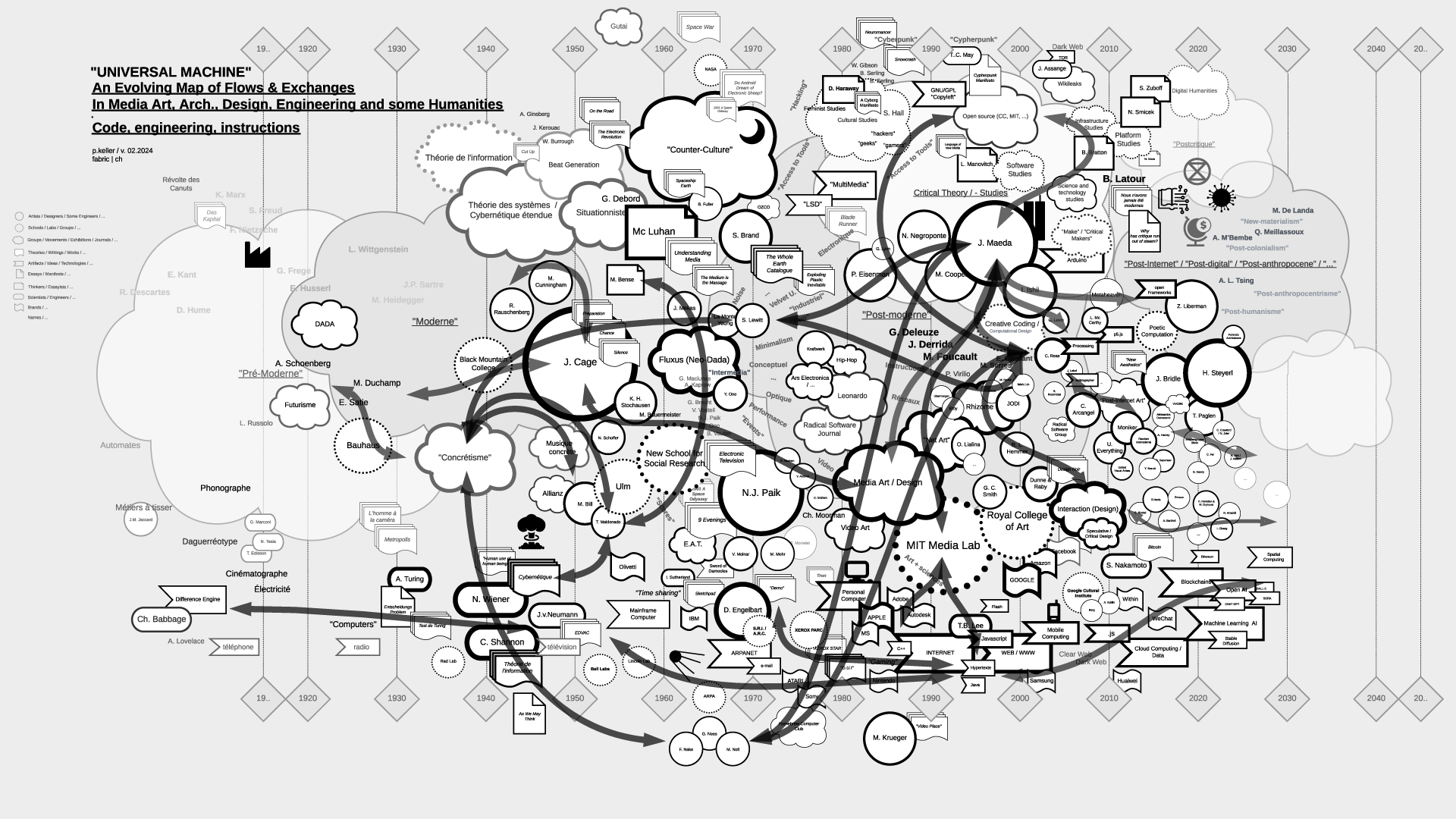
Flows in the map > "Scores, Partitions, ...":
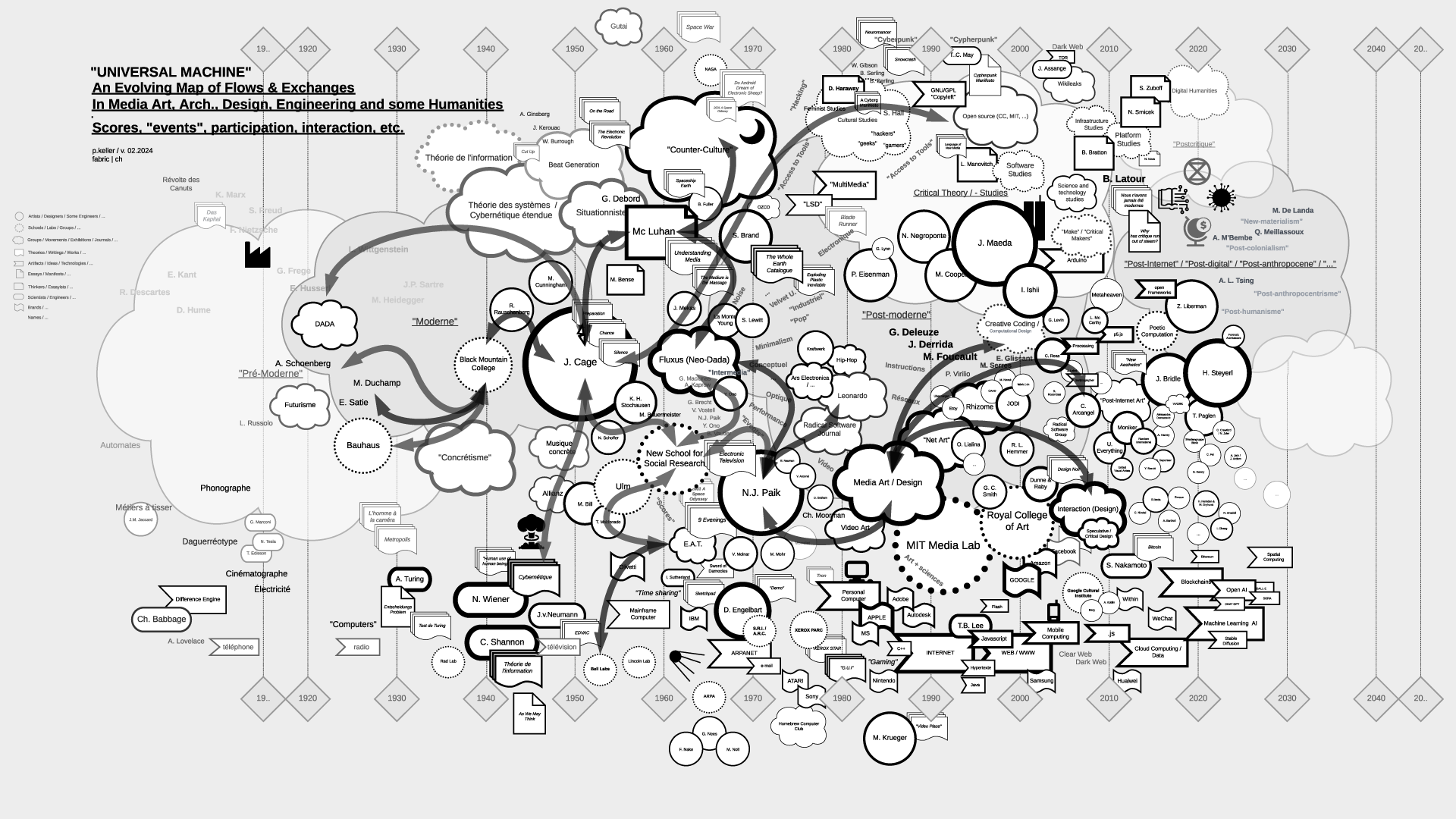
Flows in the map > "Countercultural, Subcultural, ...":
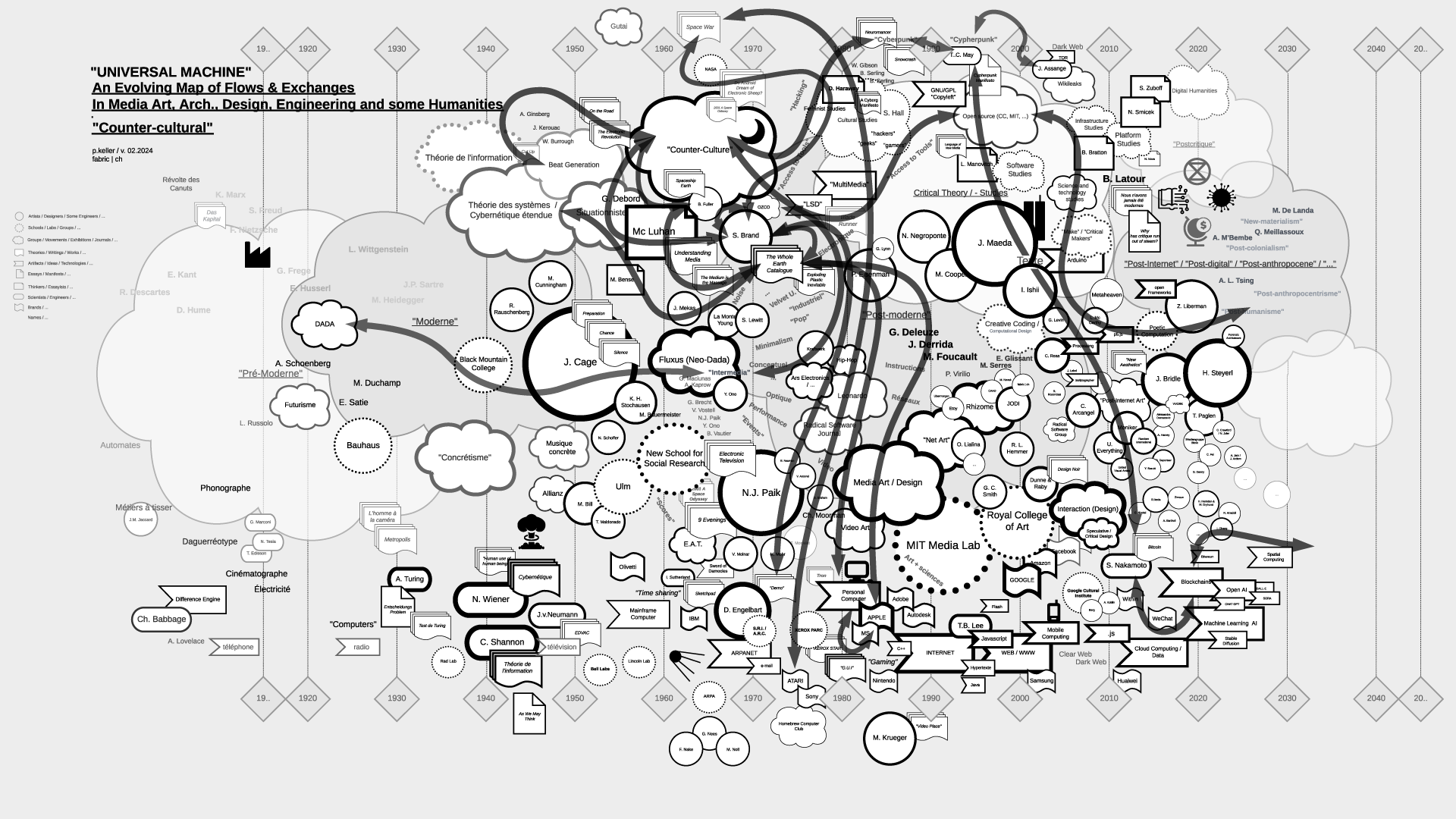
Flows in the map > "Network Related":

Flows in the map > "Interaction":
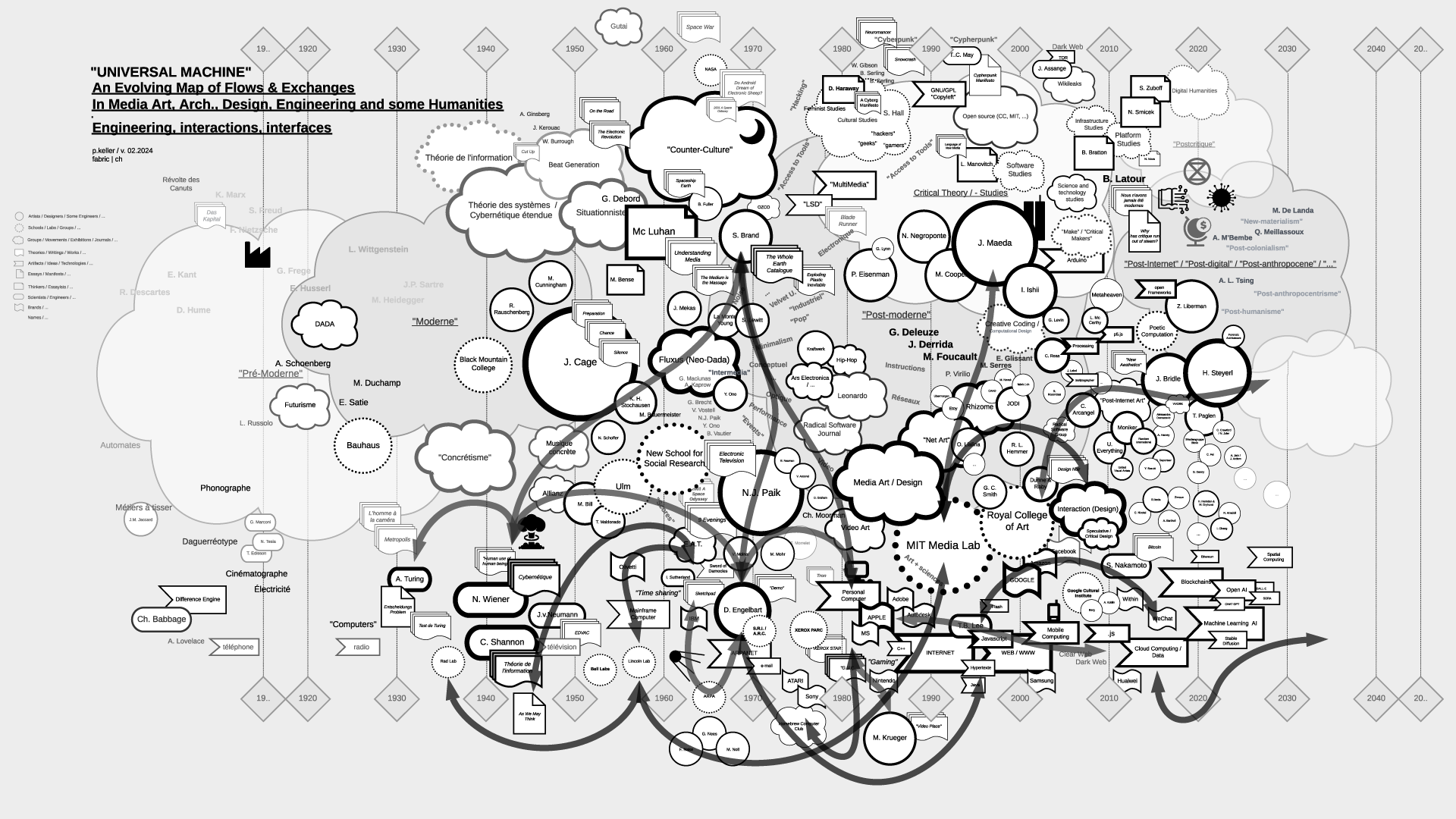
Flows in the map > "Post-Internet/Digital, "Post -..." , "Neo -...", ML/AI":
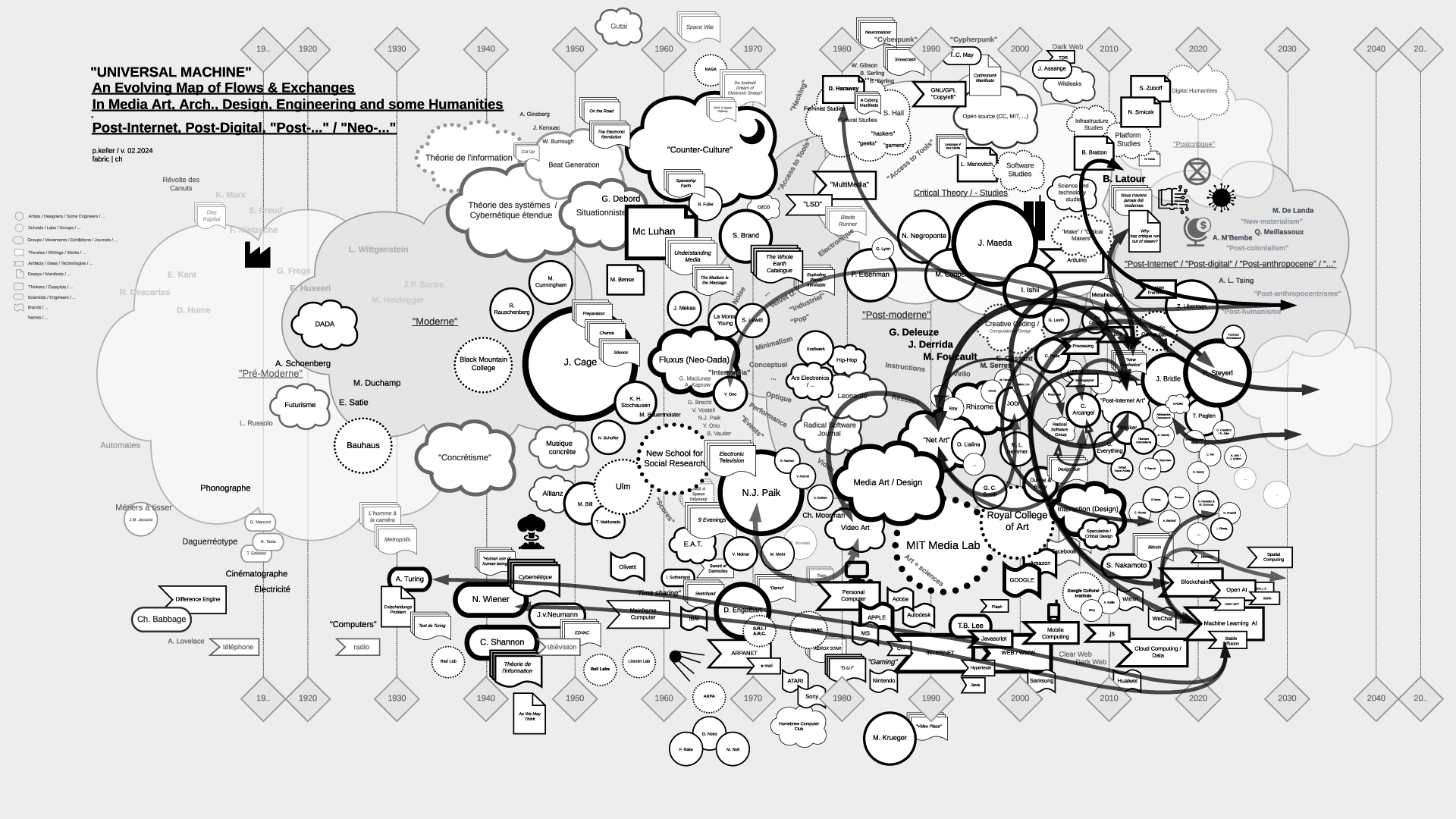
...
To be continued (& completed) ...
Friday, February 09. 2024
Note: as part of a year-long preliminary research into digital exhibitions, we teamed up with the Nam June Paik Art Center (South Korea) - and their incredible collection and archive of Nam June Paik's works -, as well as ECAL/University of Art and Design Lausanne, to deliver initial thoughts and proofs of concept.
Late last year saw the publication of Mnemosyne, a book on "History and Research in Arts and Design" (ed. Davide Fornari, published by ECAL/University of Art and Design Lausanne (HES-SO)).
In this context, I had the chance to be in conversation with NJPAC curator Sang Ae Park about this joint research. Among other topics, we discussed the unrealized piece – at the time – "Symphony for 20 rooms" (1961) by Nam June Paik as a potential inspiration for "remote" exhibitions, at home.
This discussion gave ground to the paper "A Symphony for Nam June Paik, Digitally" (below), while this preliminary research is likely to continue in the form of a longer-term research.
-----
By Patrick Keller





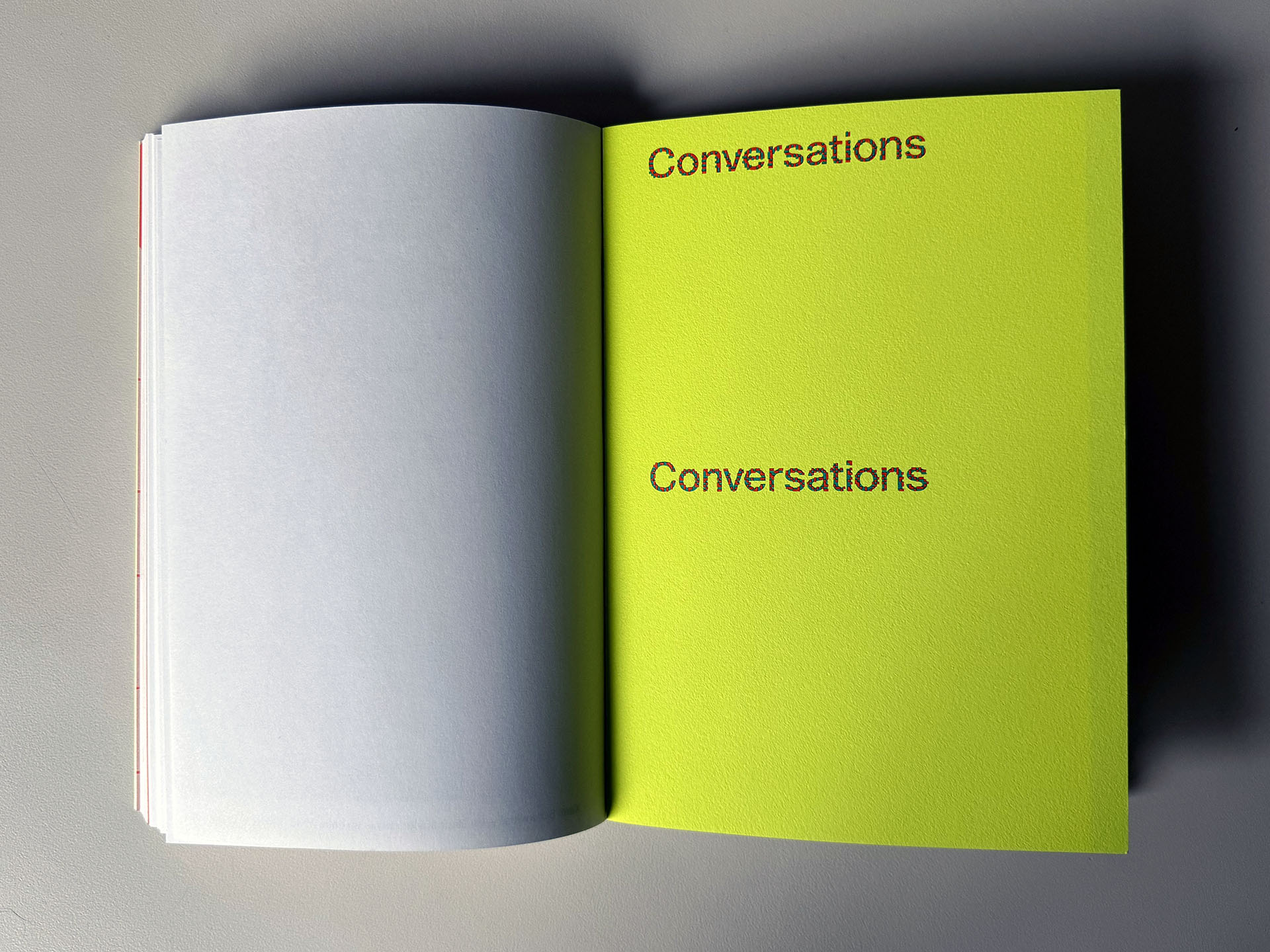



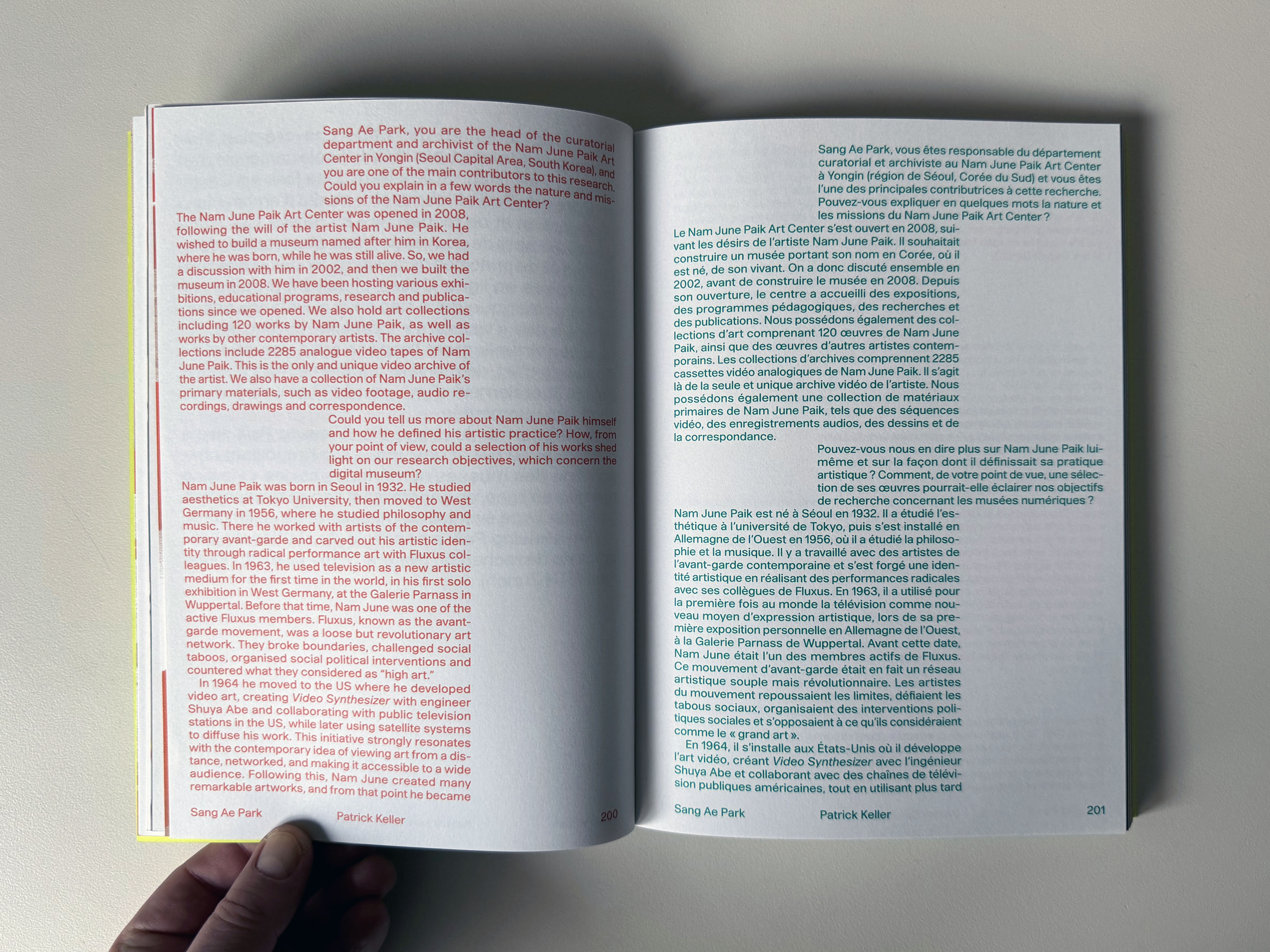
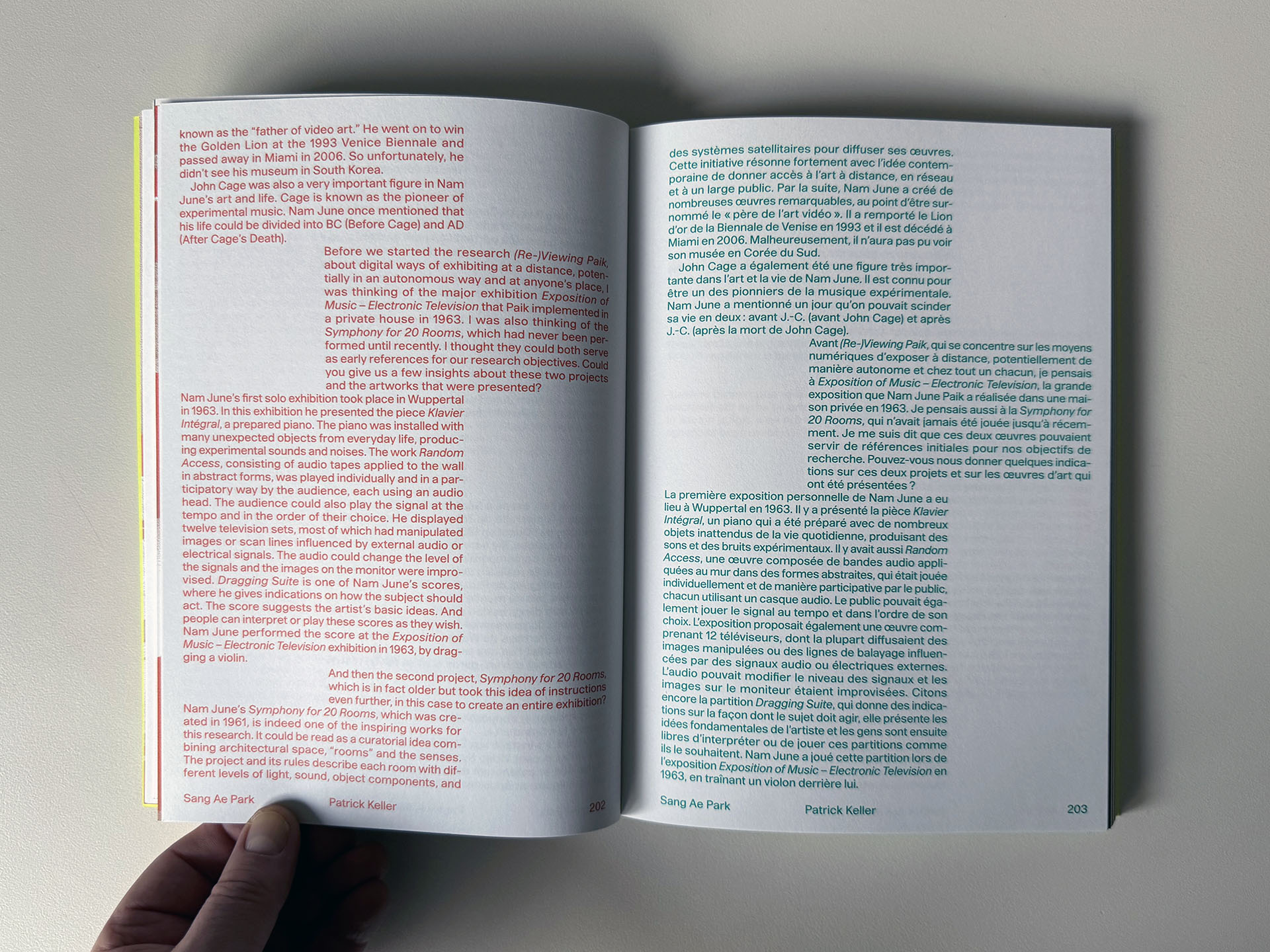

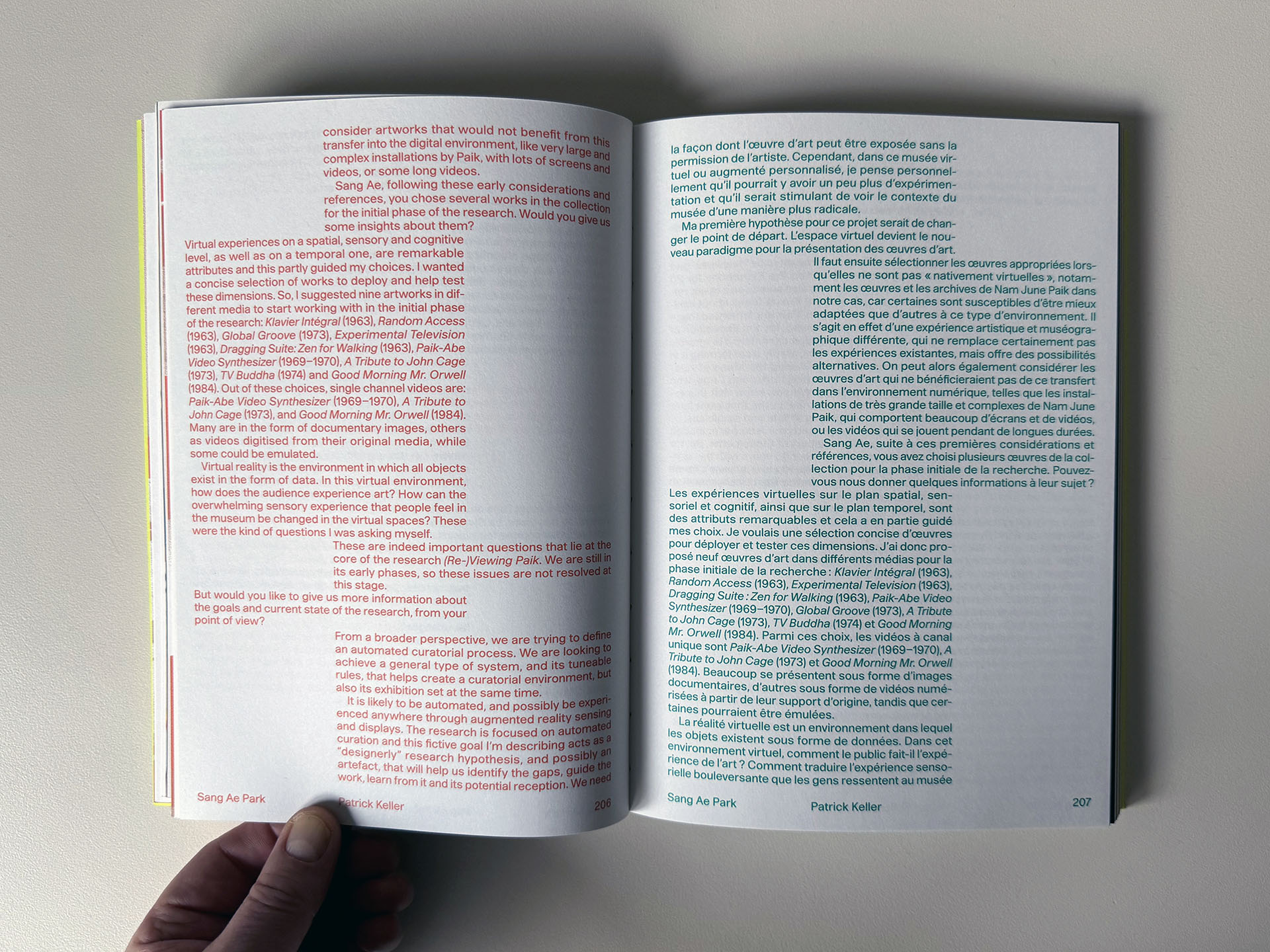
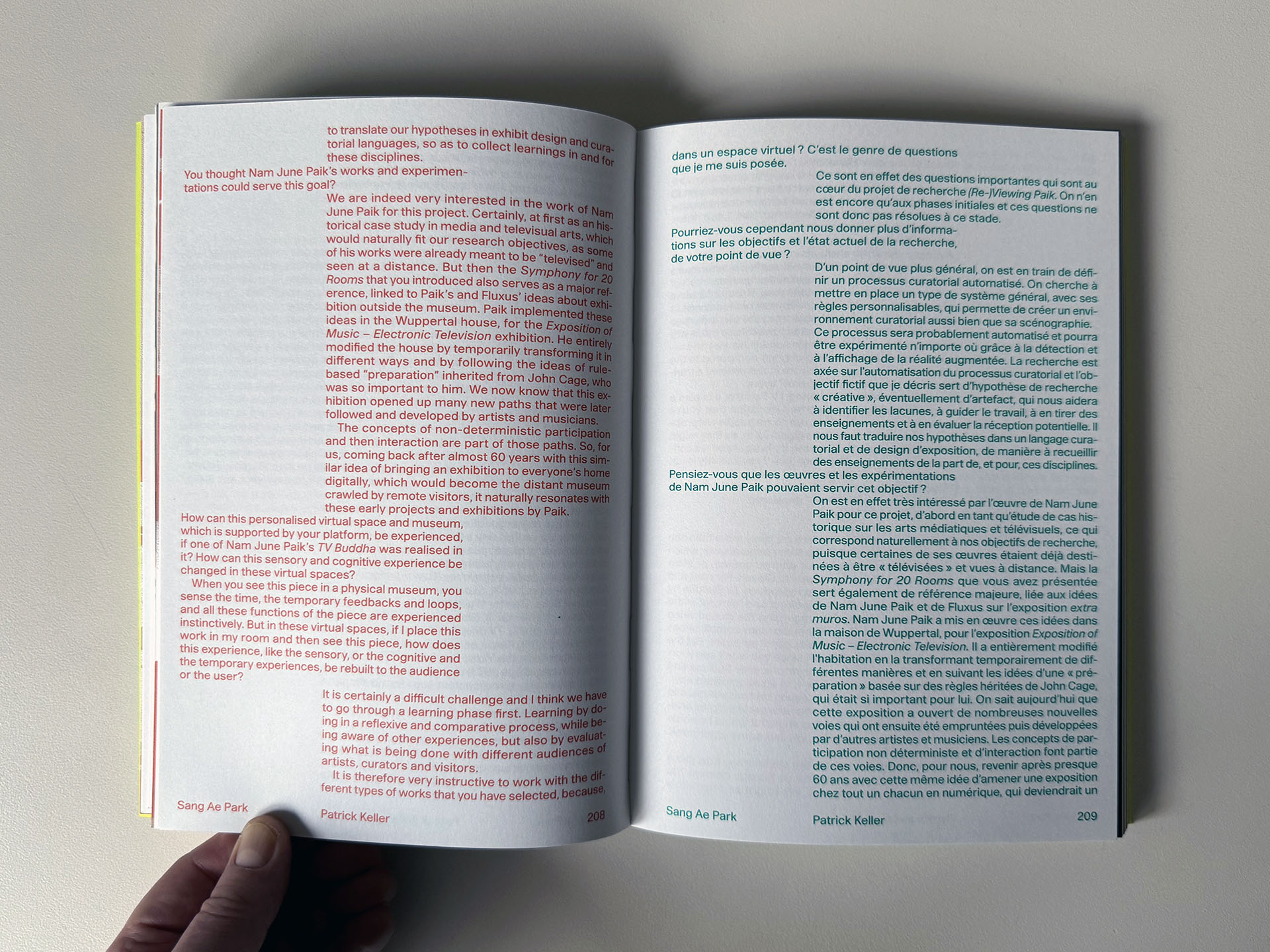
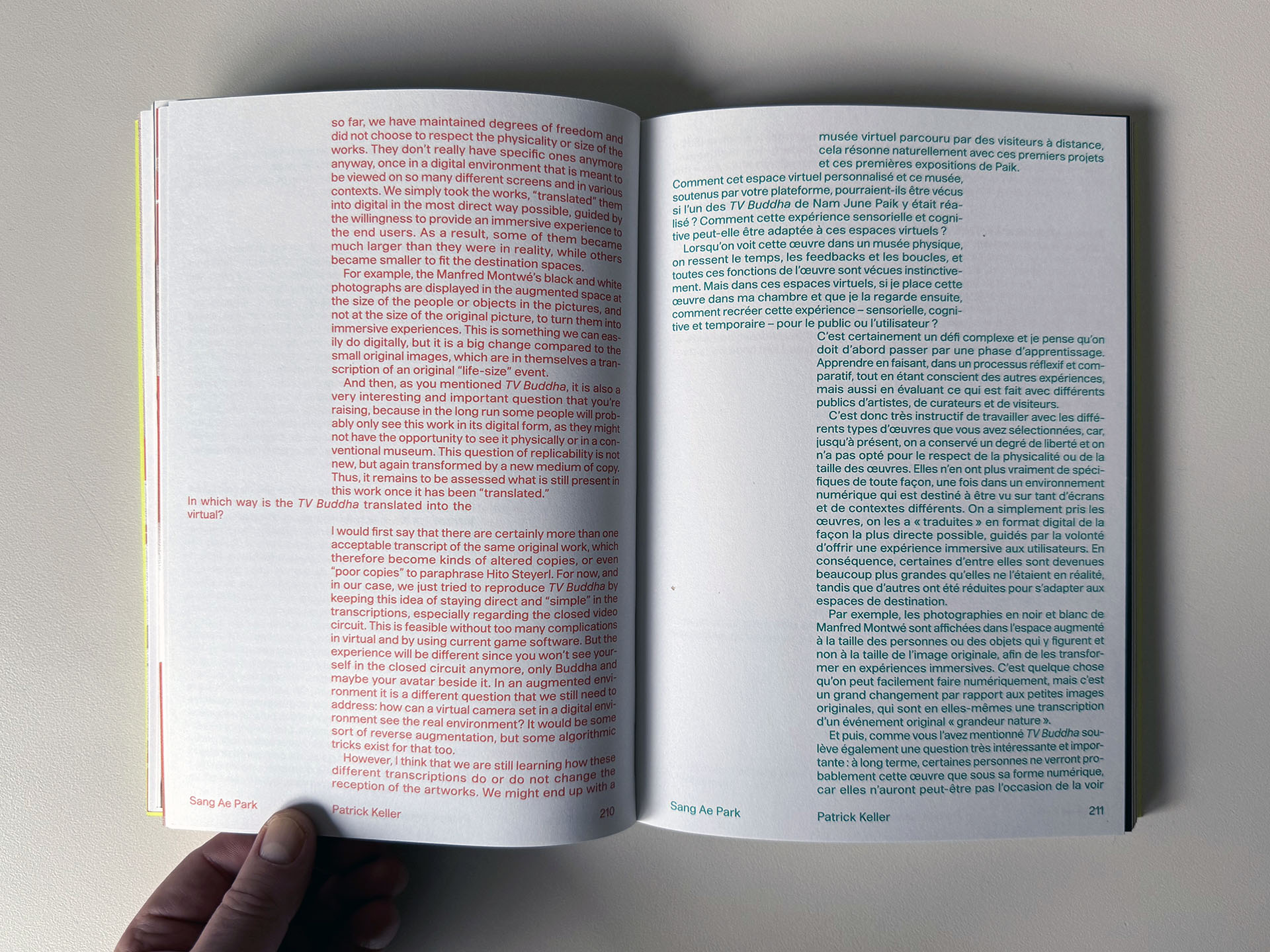
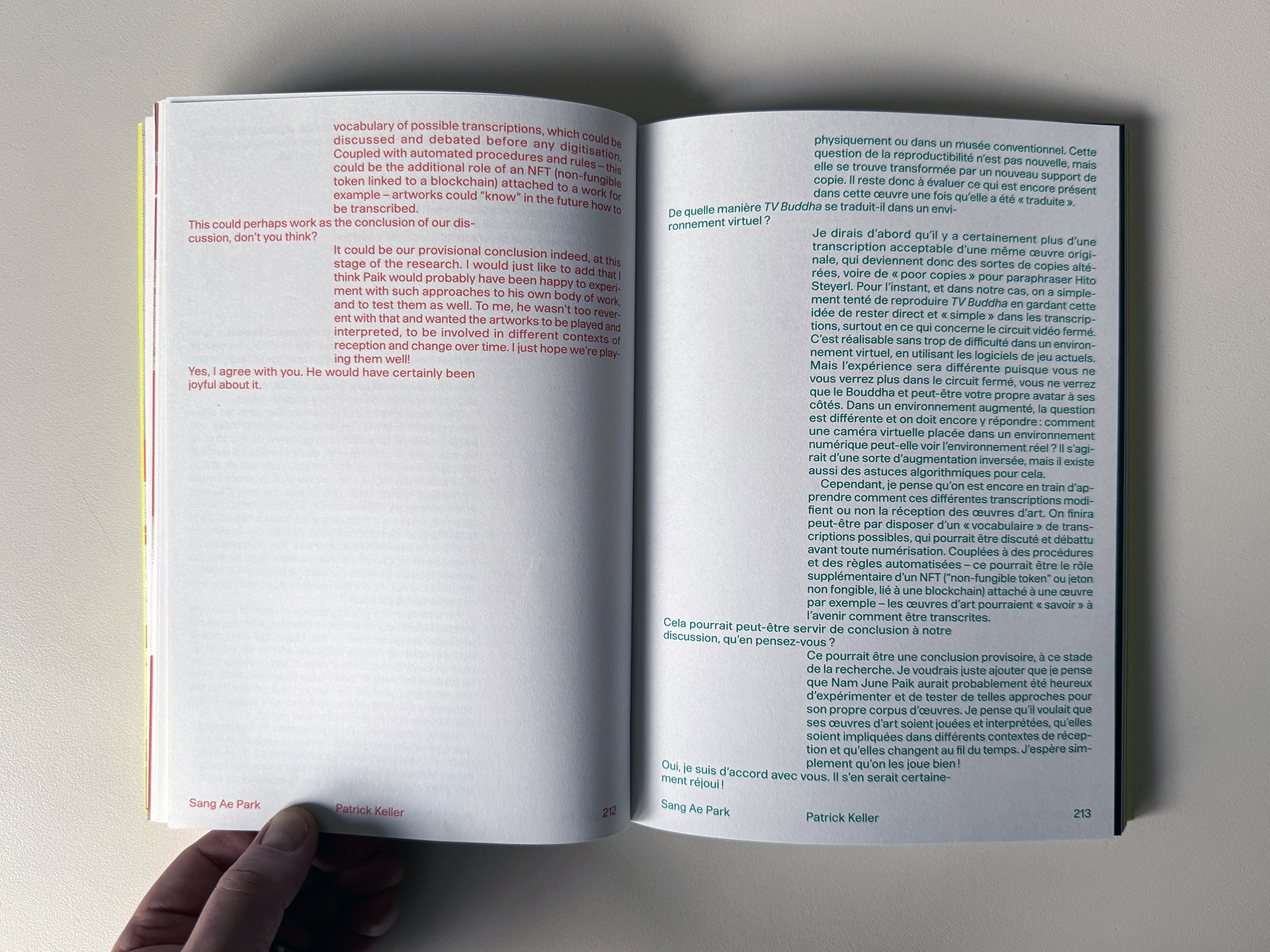


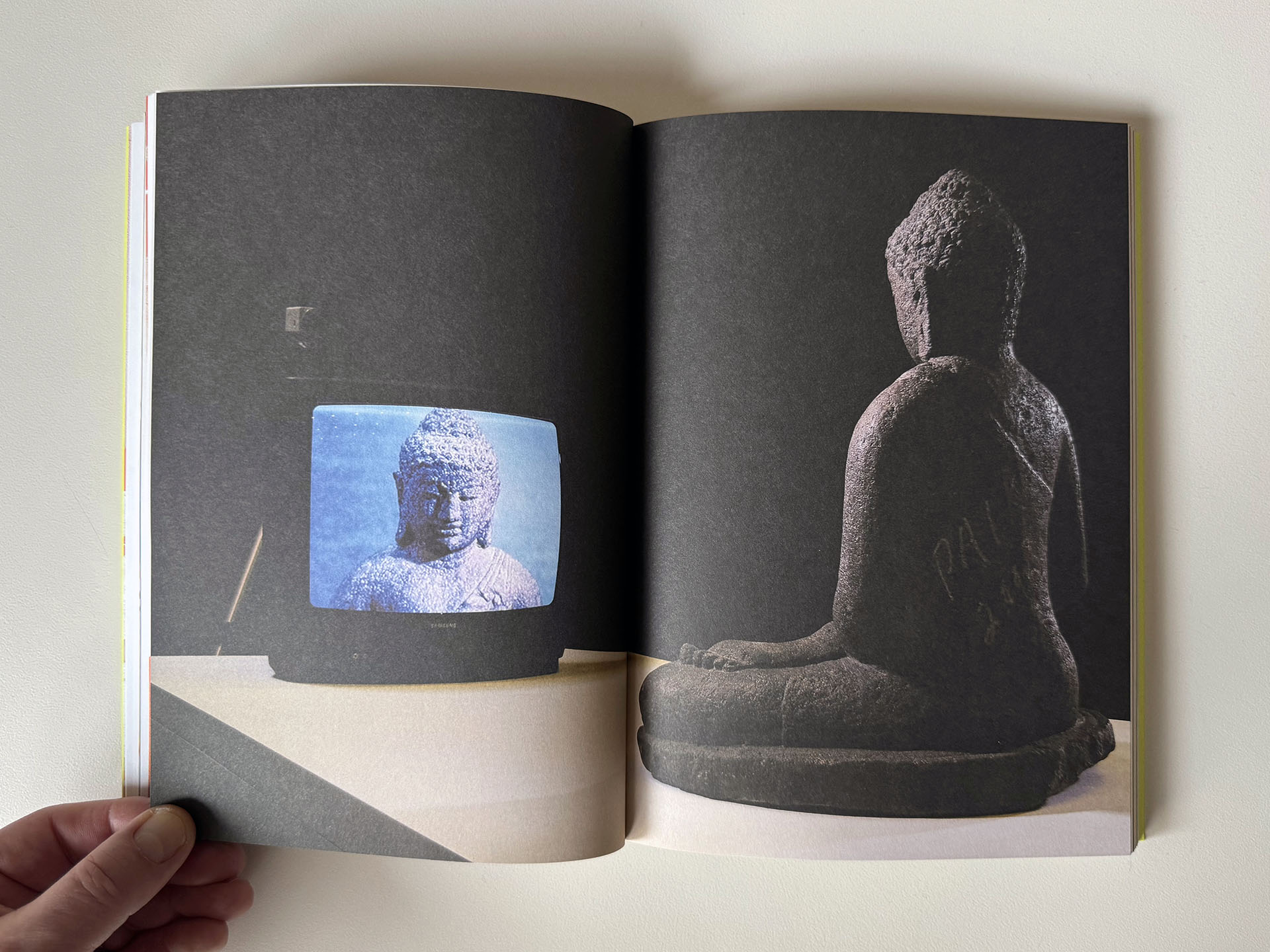
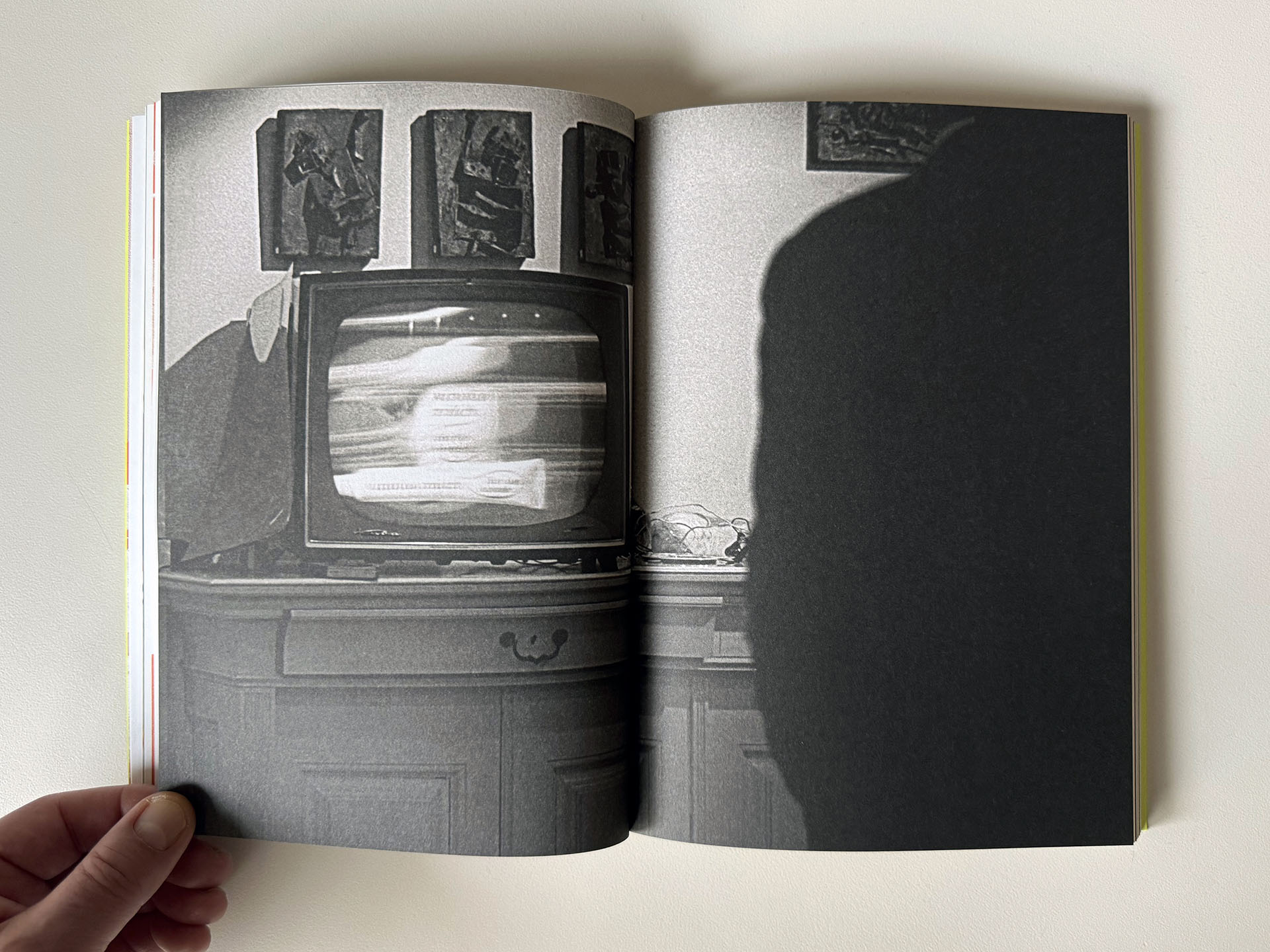

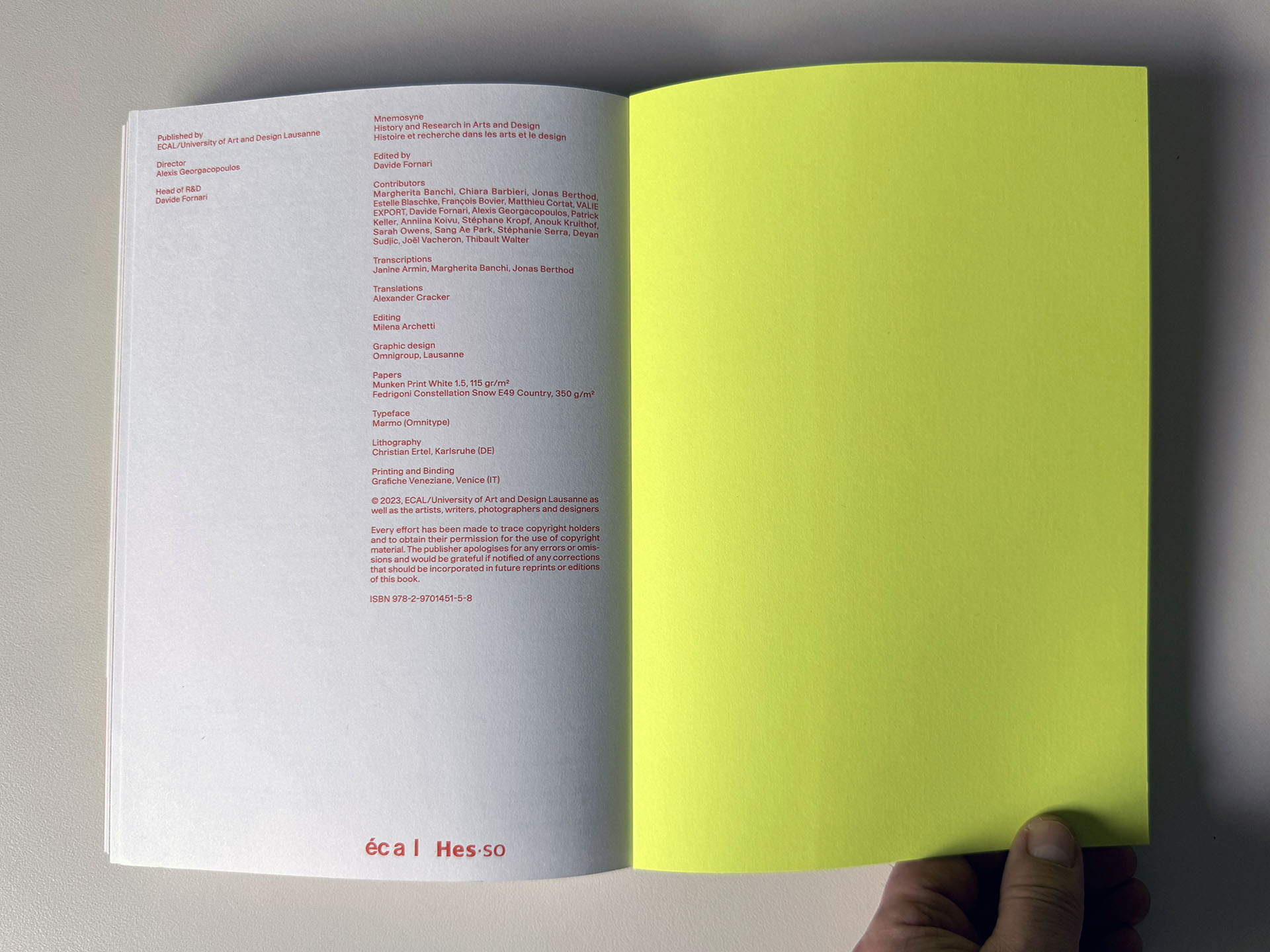

Monday, October 30. 2023
Note: this Saturday (04.11) fabric | ch will receive the "Architecture & Landscape" price from the Art Council of Canton de Vaud (CH).
It is a rare but much-apreciated recognition of our work by the region where we've been working all those years (and, at the same occasion, also one to show our faces)! We're still waiting for an invitation to exhibit fabric | ch's work somewhere in our hometown though 😉
So rejoice, and let's celebrate together during the following drinks reception!
Via @fvpc
-----
Monday, October 02. 2023
Note: this well-documented publication, complete with essays and which also serves as a comprehensive exhibition catalogue, was released to coincide with the end of a European research project Beyond Matter. The research was led by the ZKM (Zentrum für Kunst une Medien, Karlsruhe) and Centre George Pompidou in Paris. The publication also came out as the exhibition catalogue in relation to two exhibitions held in 2023 – n ZKM and Centre Pompidou – about the research obectives.
Beyond Matter – Within Space is certainly destined to become a central work on the issue of digital art exhibition in our time.
In this context, fabric | ch – studio for architecture, interaction & research had the chance to be involved in the exhibition at the ZKM and work with around 200 digitized artworks (of historical signifiance) provided by the research team. The "experimental architecture" project fabric | ch created at this occasion, a new work, was entitled Atomized (re-)Staging.
-----
By Patrick Keller

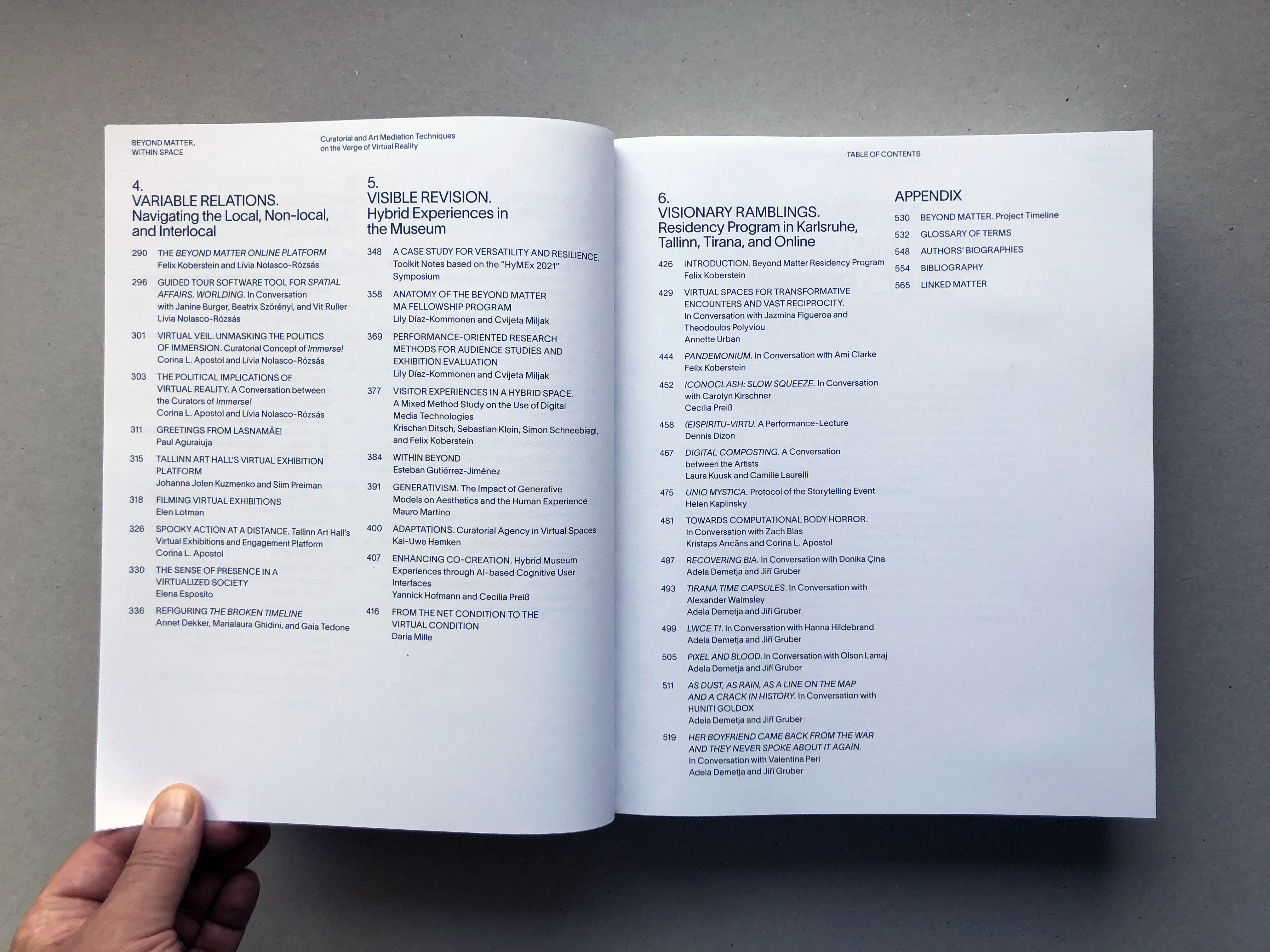
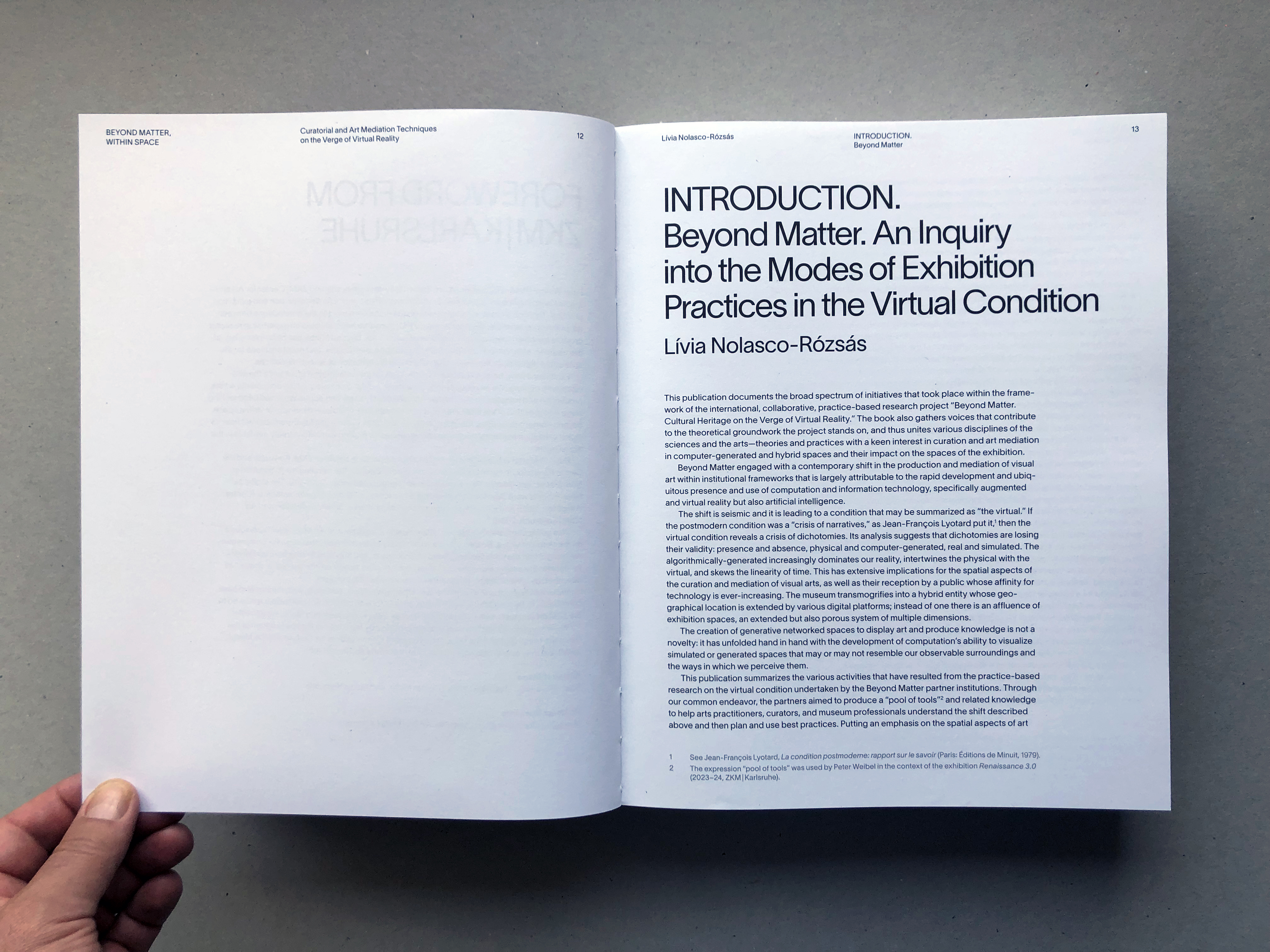
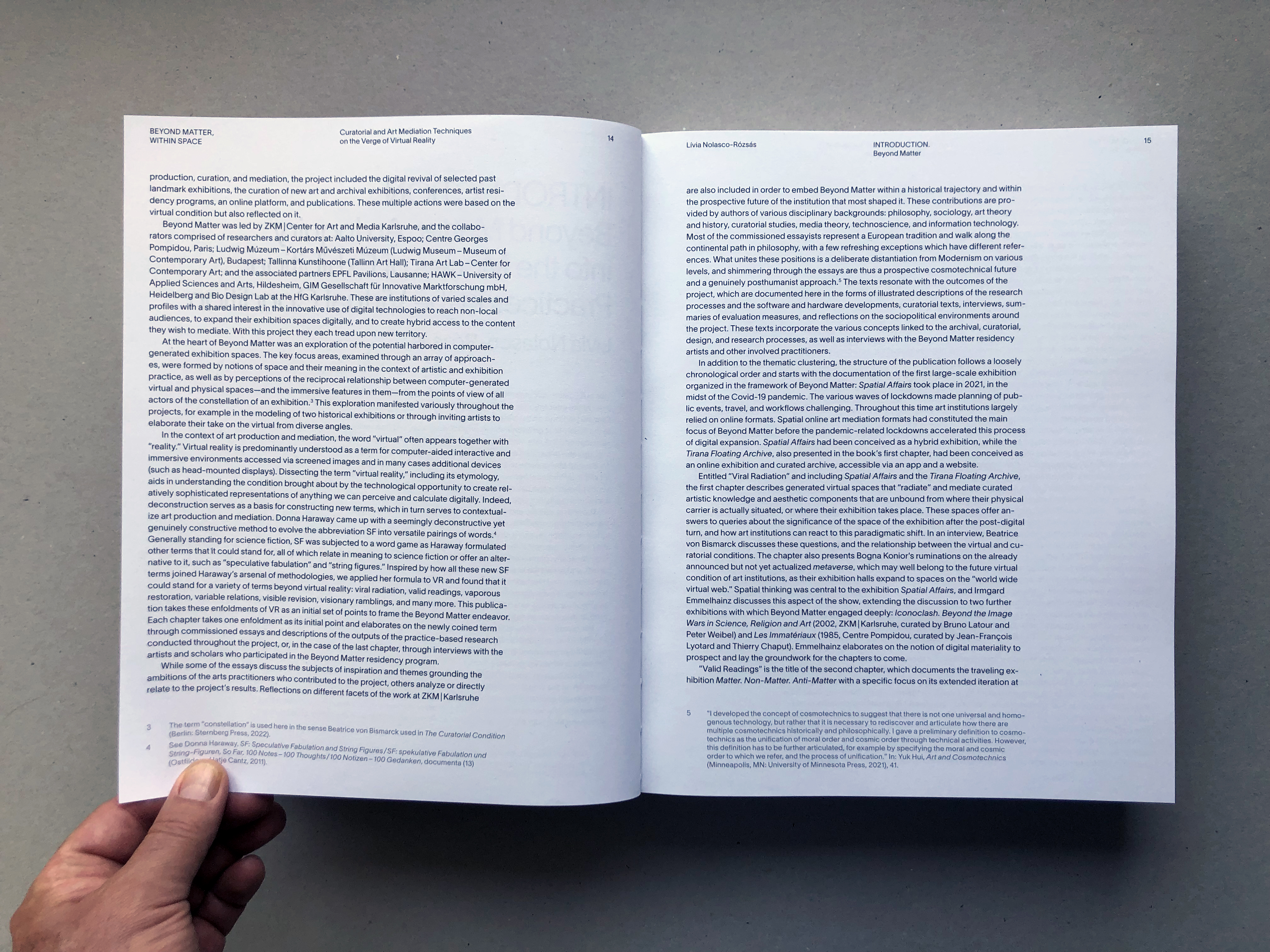

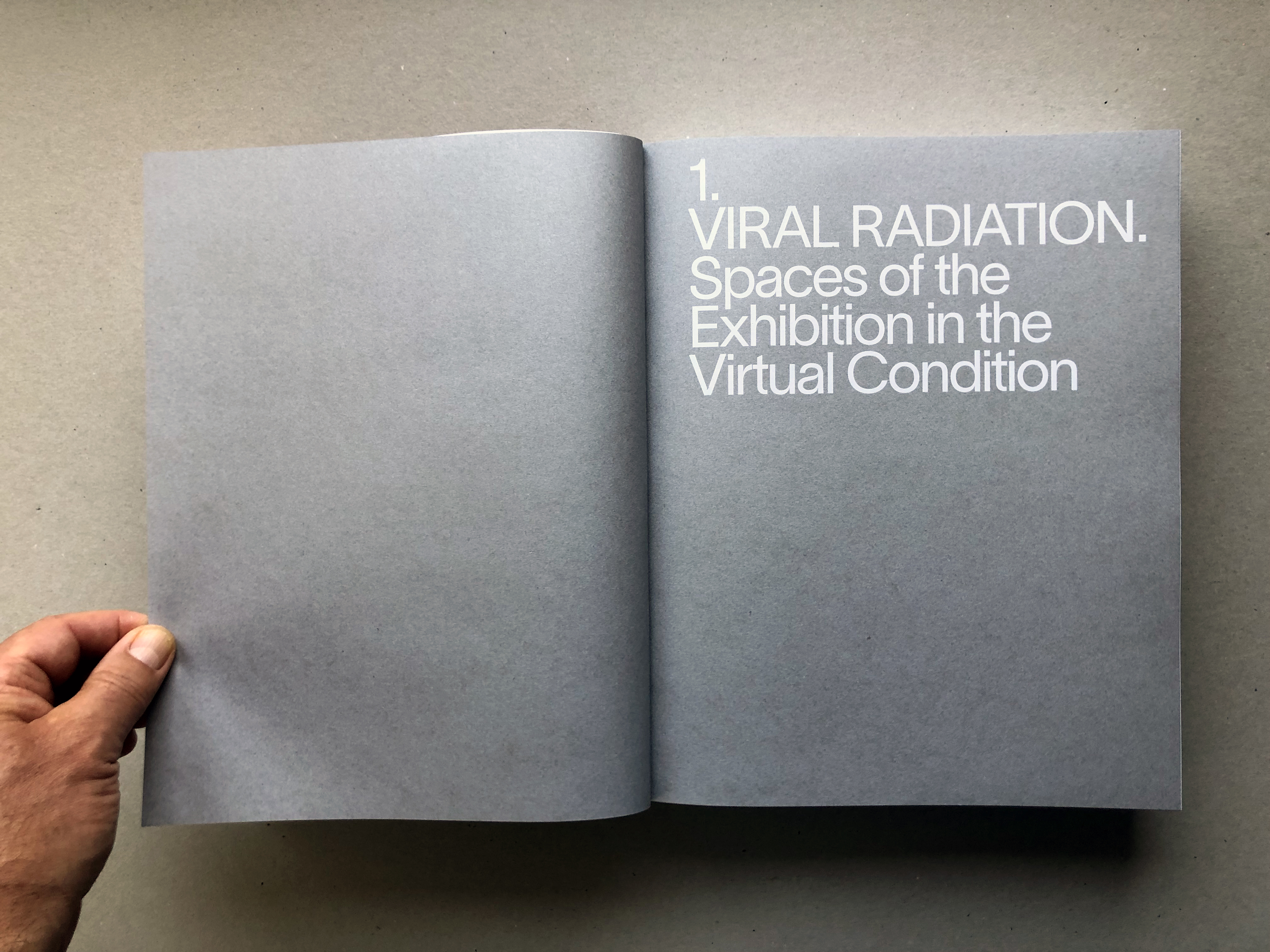
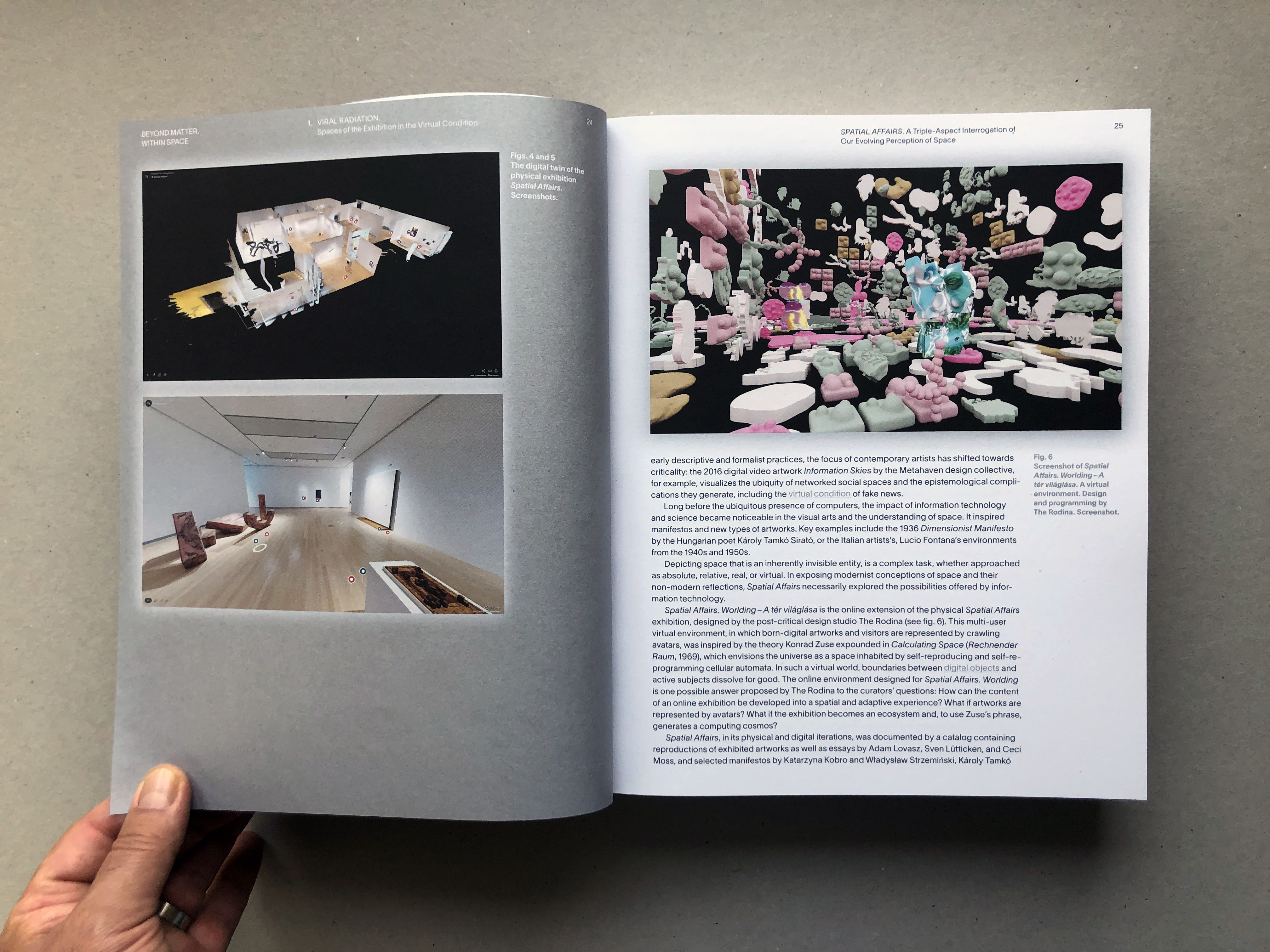

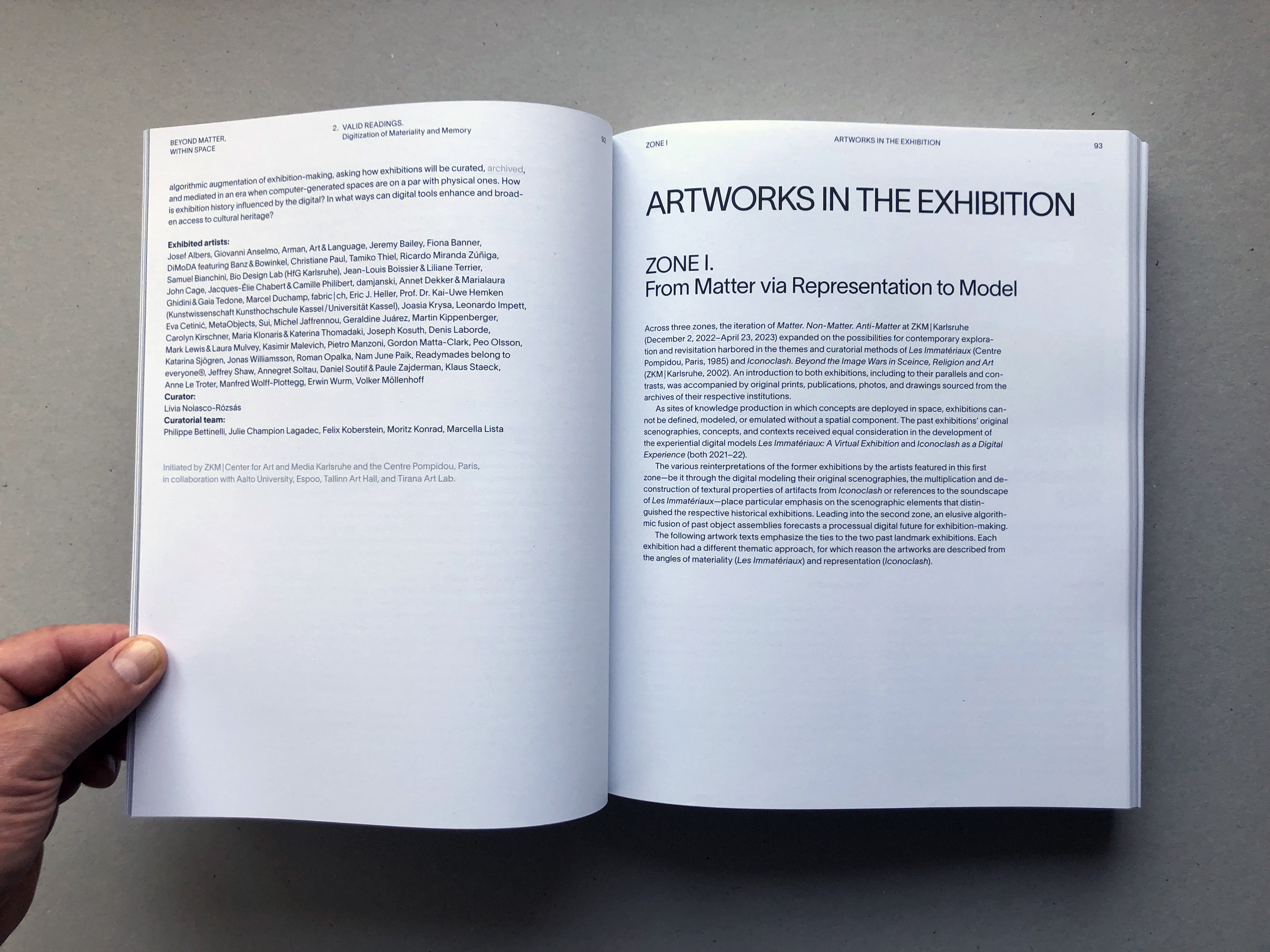
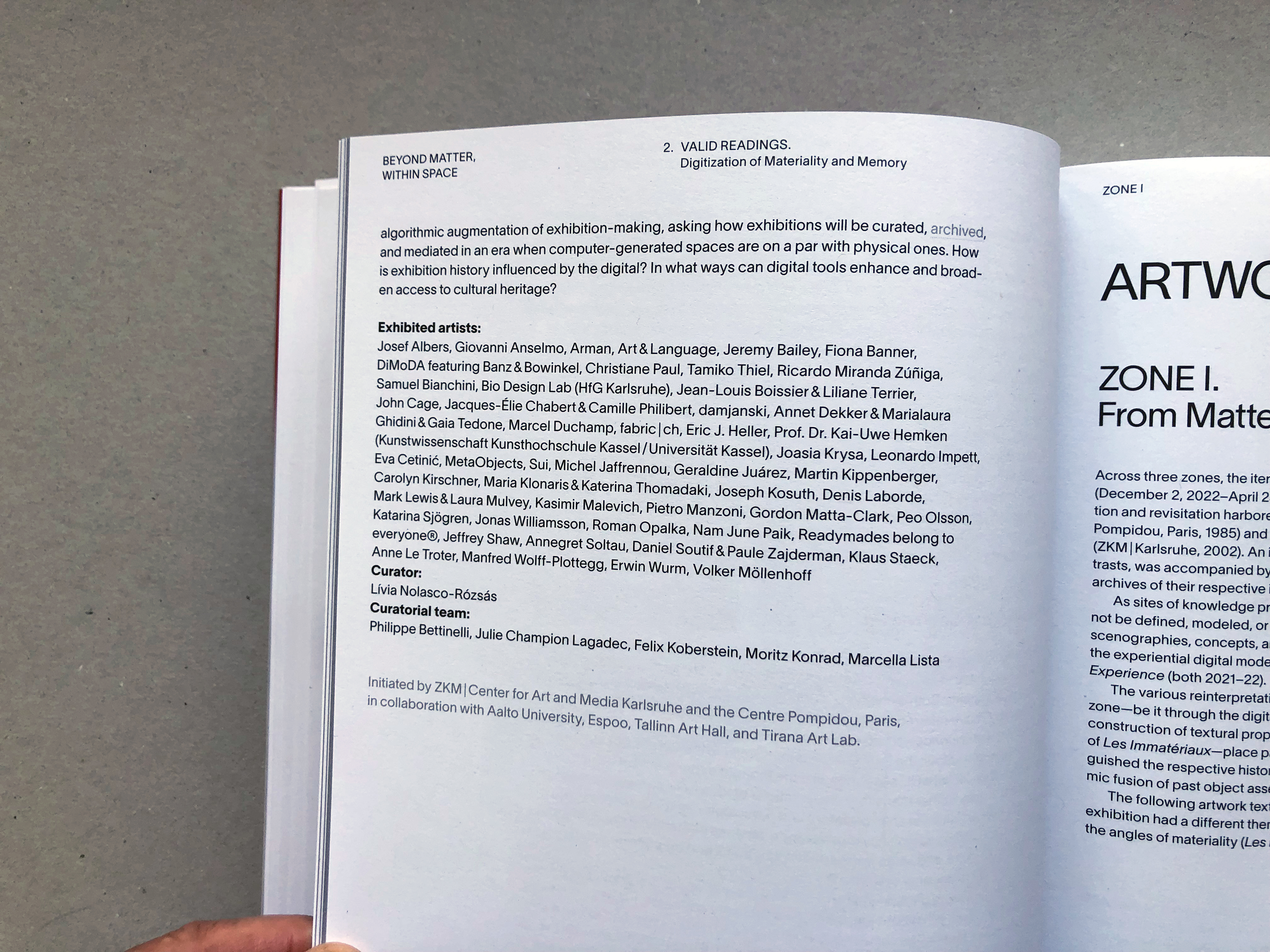
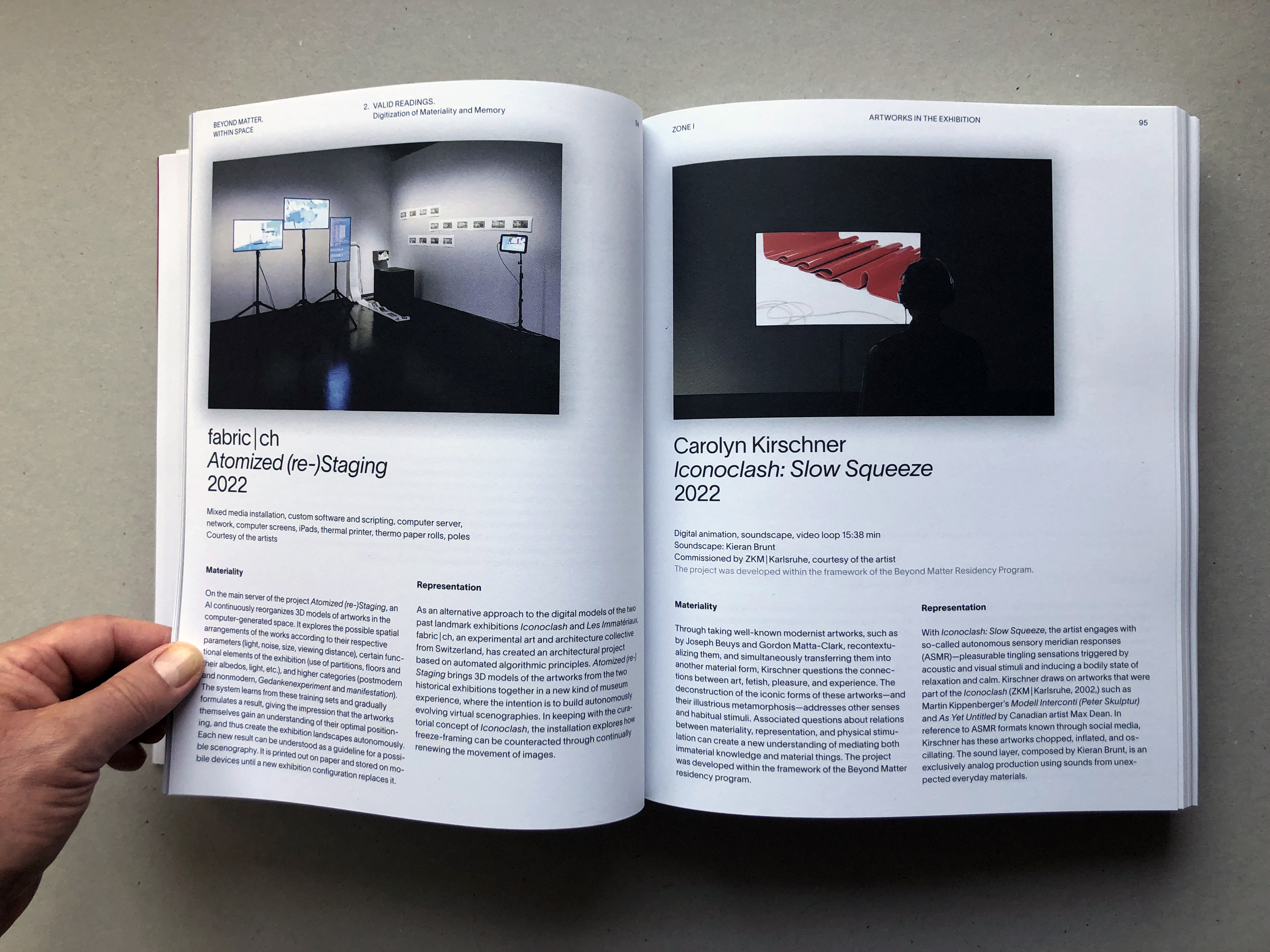

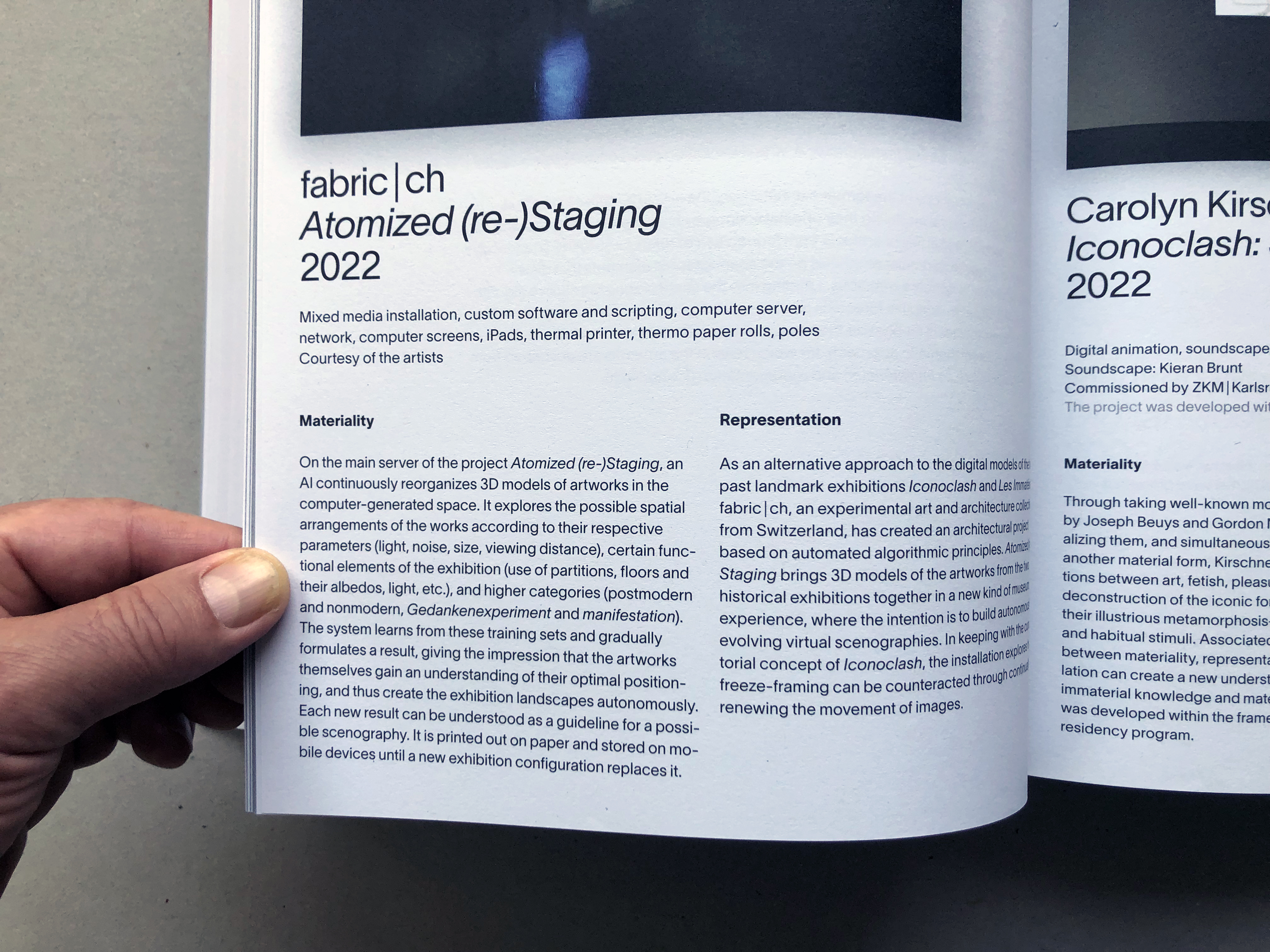
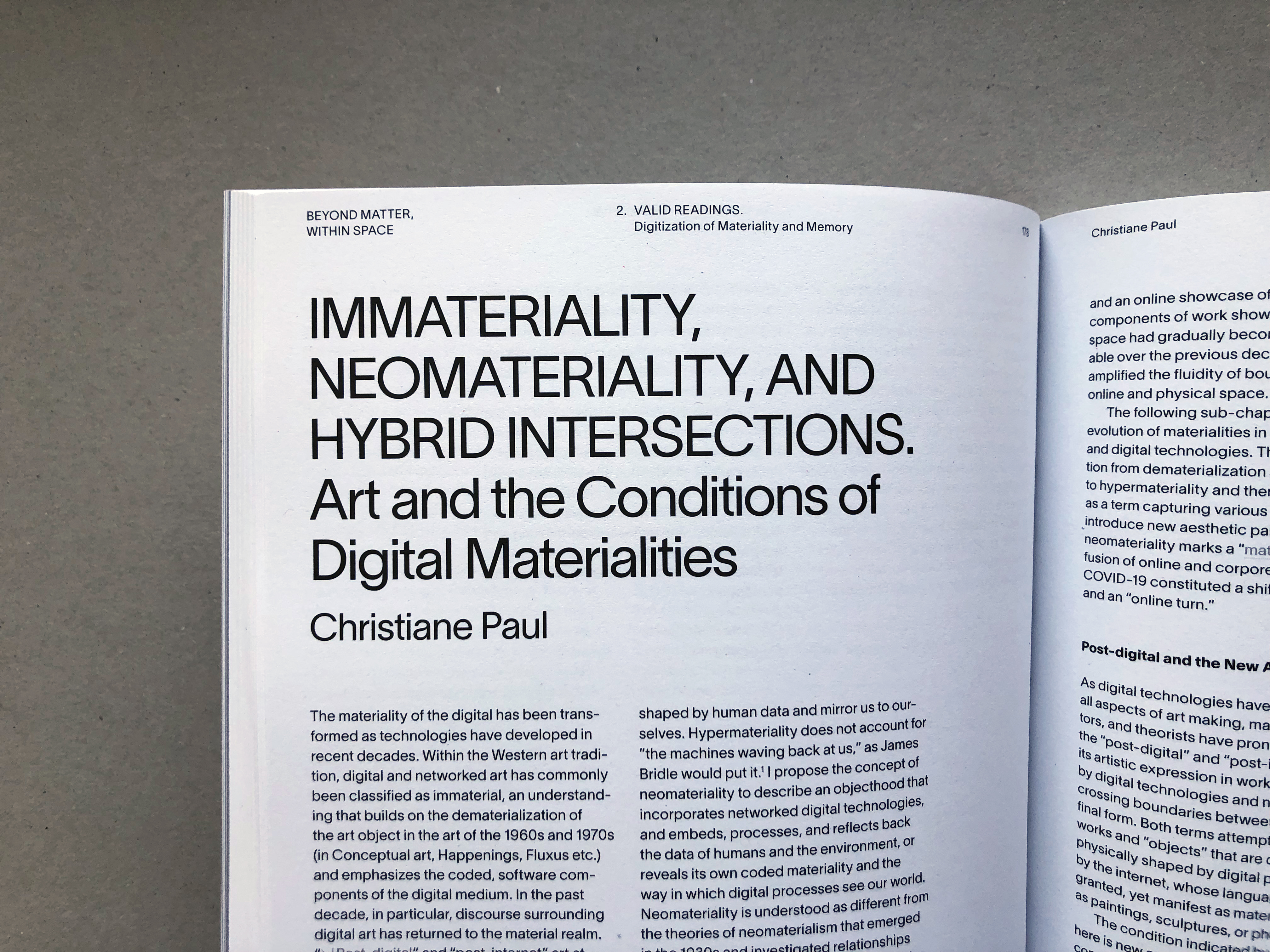
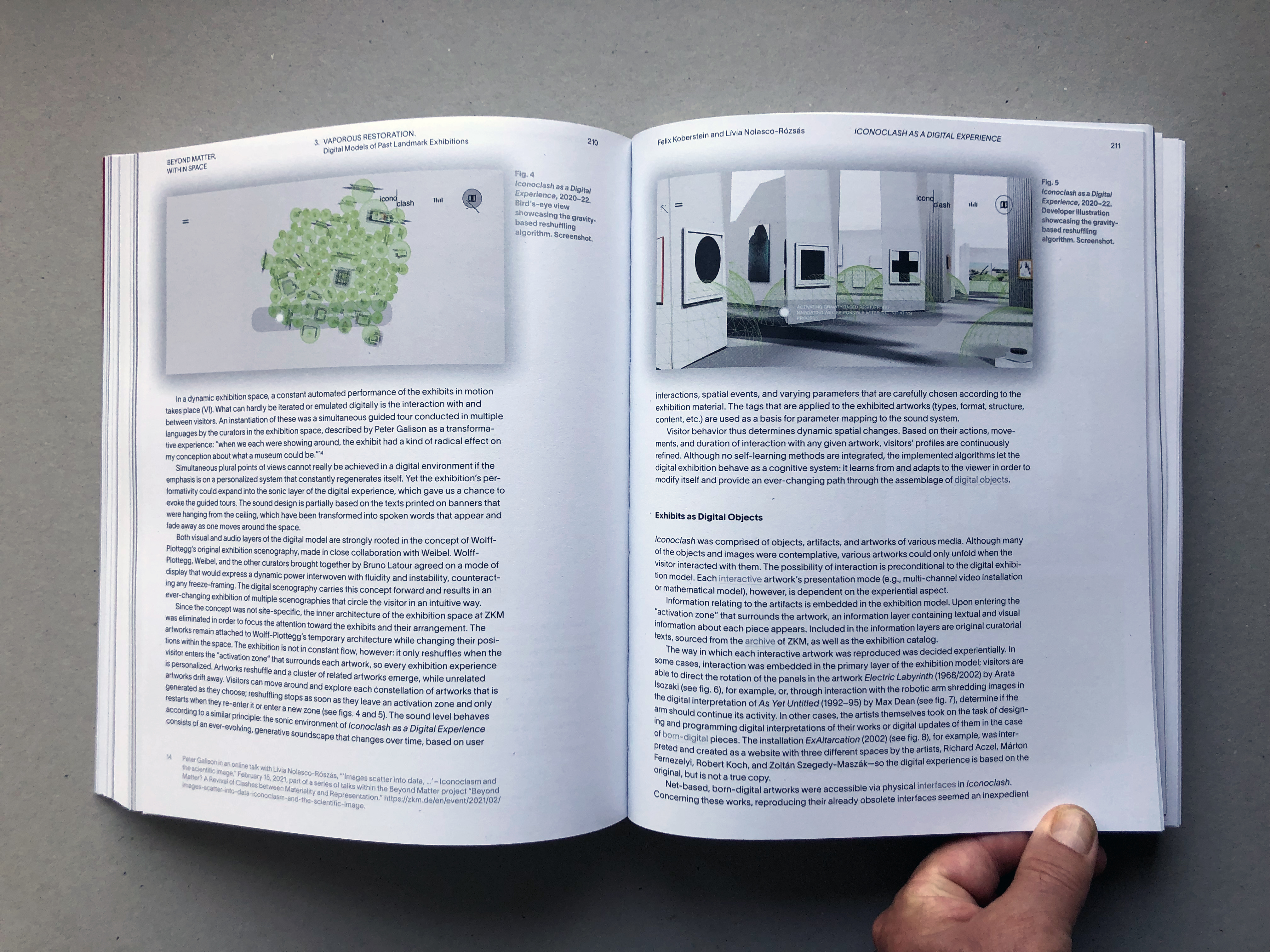
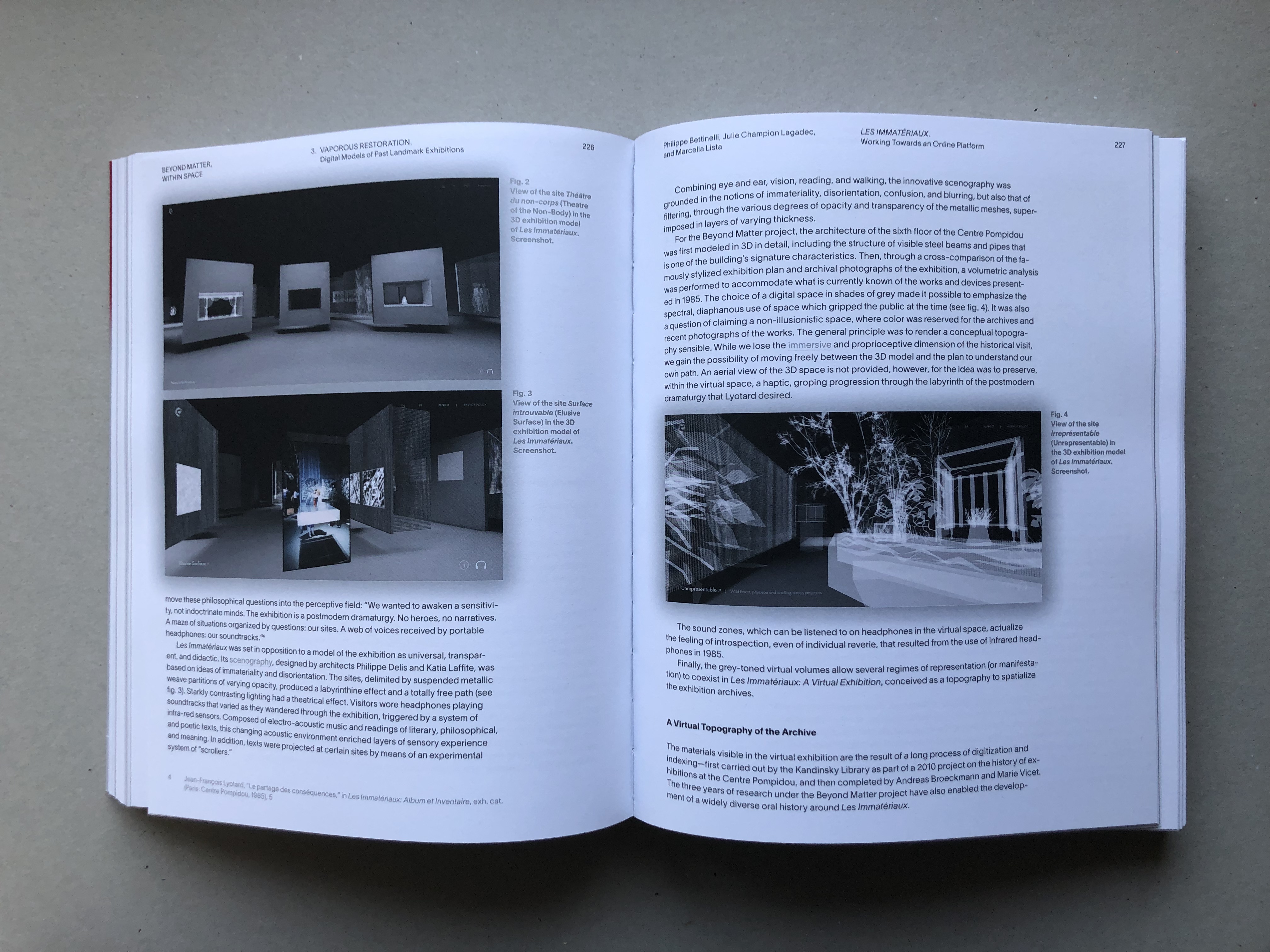
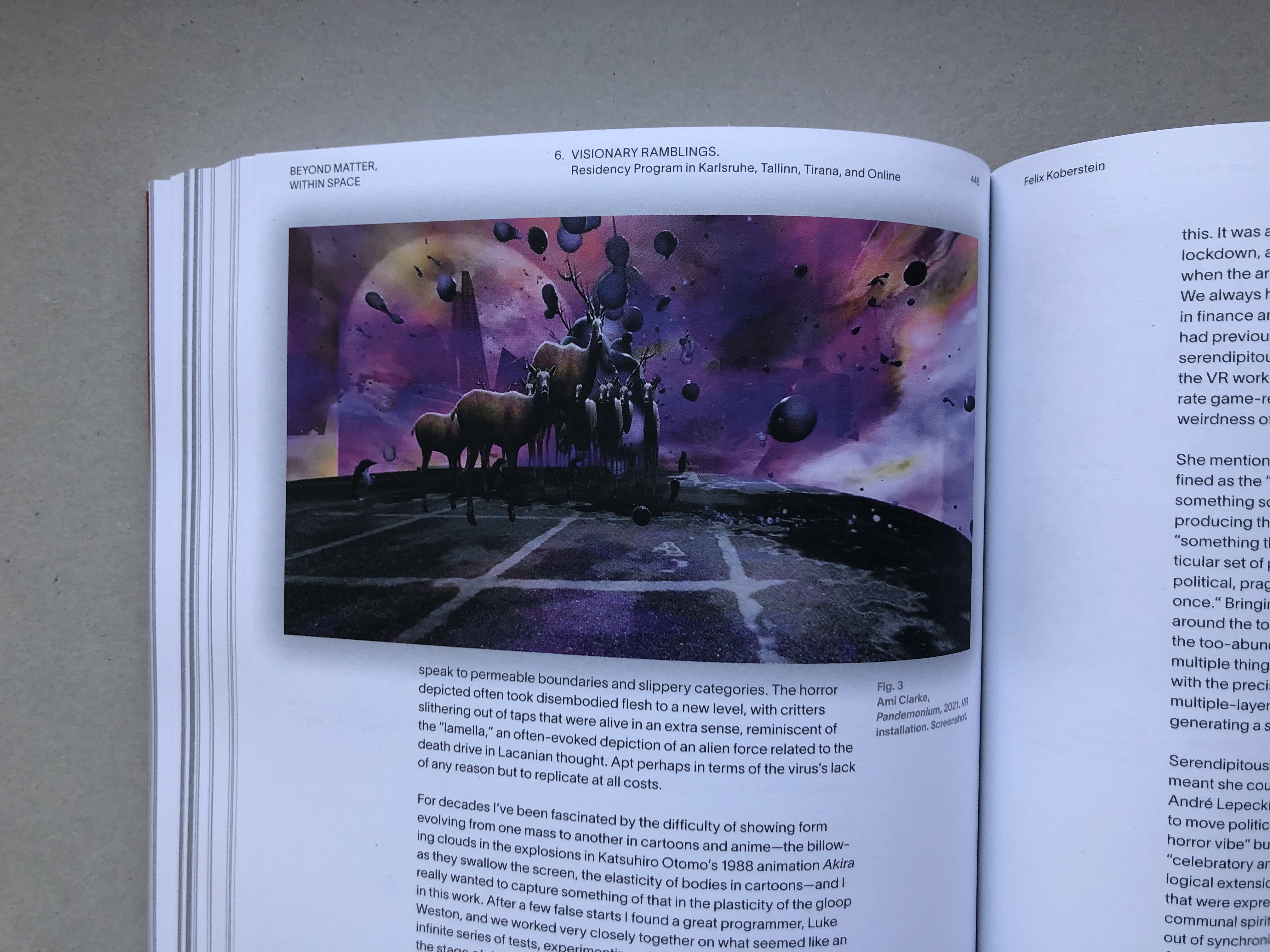
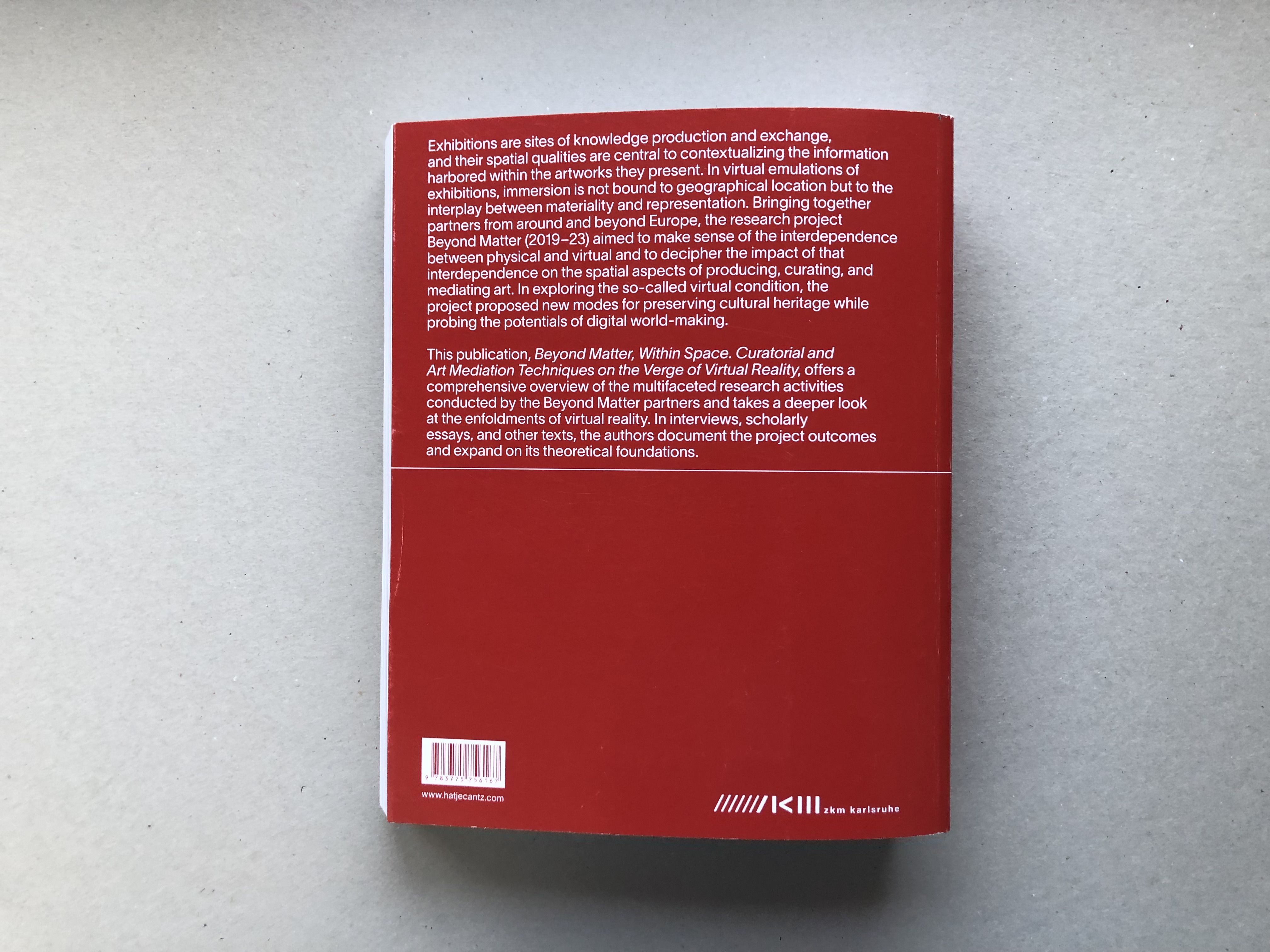
Monday, August 07. 2023
Note: Satellite Daylight Pavilion (2017) – pdf file documentation HERE – by fabric | ch is presented during Chengdu Biennale at AC Cube in Chengdu (Sichuan, CN).
The piece is an architectural experimentation, displayed as 4 videos in loops, and articulated around two "environmental devices", namely two Satellight Daylight pieces, which tend to reorganize and entertwine the natural rythms of day and night within the pavilion.
This creates a form of luminous phasing between two spatio-temporal referents (the localized one of London's Hyde Park and those of two fictitious satellites circling the Earth), hybridizing their time and space... in a quest for a new liveable relationship with the now mediated space.
The work is part of the exhibition Community of the Future: The Same Frequency and Resonance (images below) and is curated by Guo Jinman.
Via @fabricch_asfound (fabric | ch's default Instragram account)
Tuesday, July 18. 2023
Note: fabric | ch presented its recent works at the Centre Pompidou in early July, as part of the Moviment program of exhibitions/performances/conferences/projections. We took part in Chapter 9: Beyond Matter.
The focus of the weekend was a return to the historic exhibition "Les Immatériaux" (1985, cur. T. Chaput & J.F. Lyotard) and the contemporary questioning of the postmodern period.
Participants included artists who took part in Les Immatériaux (J.-L. Boissier, K. Thomadaki, J.-C. Fall), as well as contemporary curators such as H.-U. Obrist and D. Birnbaum, so as artists and filmmakers P. Parreno, A. Serra and philosopher A. Longo.
Via @ptrckkllr
-----
Monday, May 08. 2023
Note: this was a talk fabric | ch gave online, along with Aiiiii Art Center later last year, in the context of Swissnex Shanghai Art & Science talks.
The online session was moderated by Cissy Sun, Head of Art-Science at Swissnex and the topic was the "hot topic" of the time: "AI" and curation. fabric | ch has recently worked on several experimental or research projects related to this topic, as well as developed in-house tools along the way, and this was an opportunity to explain how we approach this question. In particular by rooting it in architectural thinking and our previous works.
Via Swissnex China
-----
By Cissy Sun
On 6th September, we had an inspiring discussion on curation and artificial intelligence with Mr. Patrick Keller, Architect & Co-founder of fabric | ch - studio for architecture, interaction & research, and Ms. Xi Li, Curator & Director of Aiiiii Art Center.
Mr. Patrick Keller introduced the architecture studio, fabric | ch, where architects and computer scientists work together on a variety of experimental projects that combine architecture, networks, data, and algorithms.
Delving into these projects, Patrick first introduced the work - Platform of Future-Past, which was shown at HOW Art Museum in Shanghai in 2022. “Platform of Future-Past” is an architectural device and monitoring installation, it is equipped in three zones with environmental monitoring devices. The sensors record as much data as possible over time, generated by the continuously changing conditions, presences, and uses in the exhibition space. The data is then stored on Platform Future-Past’s servers and replayed in a loop on its computers. It is a “recorded moment”, “frozen” on the data servers, that could potentially replay itself forever or is waiting for someone to reactivate it. A “data center” on the deck, with its set of interfaces and visualizations screens, lets the visitors-observers follow the ongoing recording process. However, as the exhibition was interrupted by the pandemic, the museum was closed for a few months, and the data from the real exhibition space was very limited. Thus the artists fed the platform the prepared data to generate the moving images. With the touch on artificial data, Patrick reminded us to think about massive ways to treat datasets while talking about artificial intelligence.
 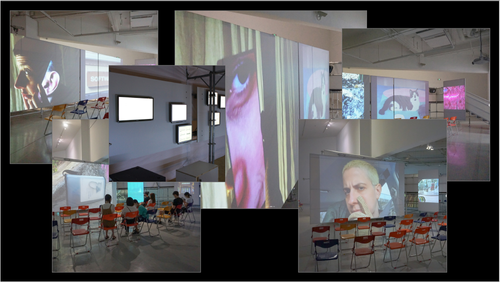
Platform of Future-Past, fabric | ch, 2022
The practice of using networks, data, and algorithms led the artists to develop a systematic approach to combining digital information with physical elements according to certain rules. Furthermore, such practices brought the artists to the exhibitions and curation projects. In the context of Entangled Realities, Living with Artificial Intelligence at the House of Electronic Arts (Basel), 2019, fabric | ch developed the work of Atomized (curatorial) Functioning (A(*)F), which was later also exhibited during Art and Science in the Age of Artificial Intelligence at the National Museum of China (Beijing), 2019.
A(*)F is an architectural project based on automated algorithmic principles, to which a machine learning layer can be added as required. It is a software piece that endlessly creates and saves new spatial configurations for a given situation, converges towards a “solution”, in real-time 3d and according to dynamic data and constraints. During the exhibition at HeK, the sensors collected data both from the artworks and the physical environment, including the walls and the lighting. The information collected by the sensors mapped out the space and helped the curators to organize the exhibition flows.

Atomized (curatorial) Functioning, fabric | ch, 2019
As an ending note, Patrick shared with us the ongoing research project between fabric | ch, the Nam June Paik Art Center (Yongin, South Korea), and ECAL / University of Art and Design, Lausanne (HES-SO), on "viewing rooms" and "digital exhibitions". The research is to give access to the collection of the art center in new ways and forms, out of the physical museum and through digital means. In addition to the research project, fabric | ch is also working on a new project about the digital presentation of the past exhibitions at ZKM (Center for Art and Media, Karlsruhe), the exhibition is planned to open at ZKM at the end of the year.

Ongoing project by fabric | ch
The International Conference on AI Art was co-organized by the Aiiiii Art Center and the Art and Artificial Intelligence Lab of Tongji University. With the theme of “AI and Authorship” (2021) and “Artificial Imagination” (2022), the conference combines the most radical of research from a diverse international curation of fields ranging from art, design, computational science, cultural critique as well as political philosophy. This network is established to pioneer and push the boundaries of artificial intelligence and creative production.
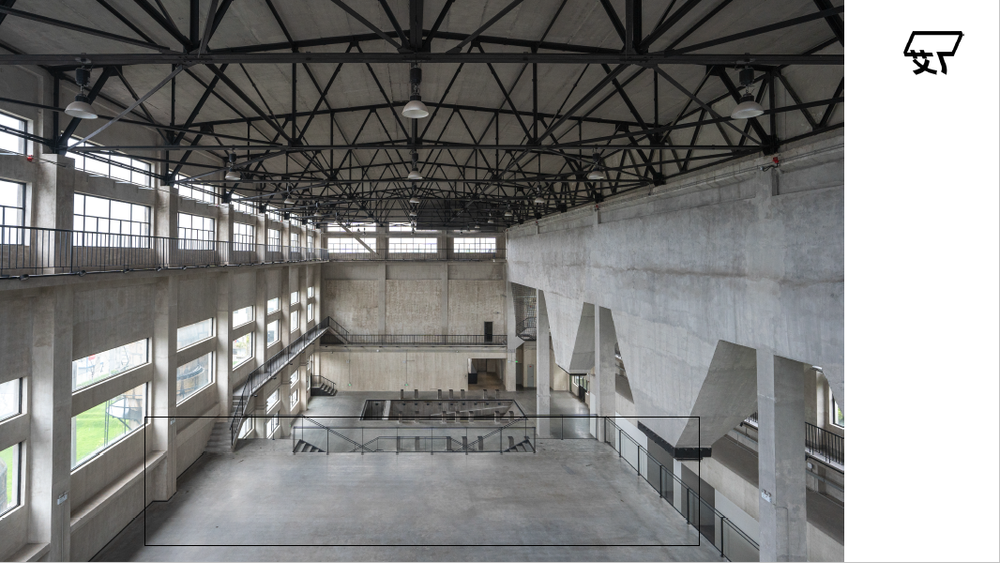
Exhibition space of Aiiiii Art Center
While looking at the exhibition space, two questions came to Xi’s mind: how to physicalize the digital artwork into the space and how to visualize AI art. The two questions lead Xi and her team to the curation concept of the Book of Sand. She chose literature to narrate the exhibition to catch the public attention and tell a good story of AI art. The exhibition starts by employing literary imagination to juxtapose seemingly infinite, random generative art and Borges’ “Book of Sand”, a book that possesses neither a beginning nor an end, just like sand. A book in which “I”, the subject, can turn the pages but cannot predict the outcome, just as we cannot fully comprehend the operational logic of the “black box” embedded by and into a neural network. Against the joy of possessing the book grows the fear that the book is not really infinite, just as we fear that the infinite productivity of AI will make us its captives, as well as the fear that its “infinite creativity” is simply the outcome of intelligent permutations of existing human ideas.
 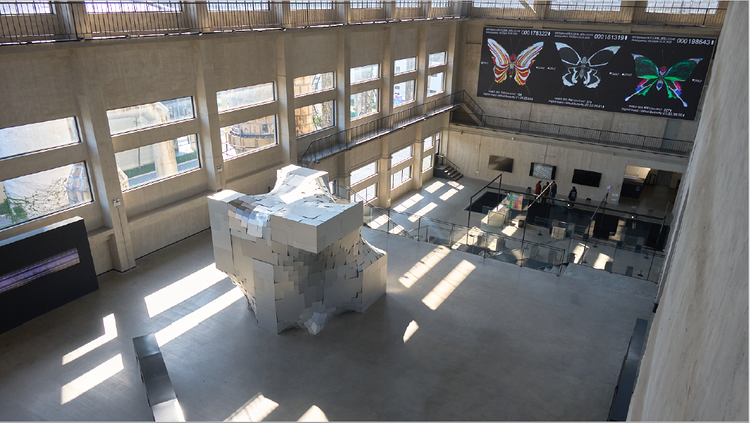
Artificial Remnants, Entangled Others Studio (left) & The Mind Scrap, Certain Measures (right)
“The Book of Sand” is an exhibition done by the joint efforts of machines and humans — the output of the machines interferes with human curatorial and artistic practices. By showcasing the works of Jake Elwes and Dabeiyuzhou, Xi explained further how they worked with the artists to turn web-based artwork into spatial installations.
 
The ZIZI Show, Jake Elwes (left) & Text Gene Project, Dabeiyuzhou (right)
It is inevitable to talk about what AI art is and who the author is when curating the programs and research projects at Aiiiii Art Center. However, such questions are not at the core of their curatorial practice but to discover the potential of AI itself and deliver the message appropriately to the target audience. With the involvement of machines in the creation and curation process, the question of the role of the machine became a challenging topic. Moreover, it also leads us to think – is there have to be a curator/creator’s name in the exhibition?
Responding to Xi’s question, Patrick pointed out that there are different cases dealing with the question. Taking their own practices, for example, the algorithm is at the core of their work. With the help of AI, the artists could dig deeper into their works, but the concept and the way of working are developed by the collective over years of research and practice. It is important to have their names in the exhibition as they are the creators of the work. Nevertheless, it might be challenging to define the creator for other works using open-source software and text-image software. However, in Patrick’s view, any machine learning program is fed with a huge dataset, without this, the algorithms could not do anything. The things the machines are trained to do and how they are trained to make it essential to define the creator.
Wednesday, March 22. 2023
Note: fabric | ch is taking part next week in this webinar about digital museums, organized by ZKM. Participants include members from ZKM Hertz-Lab, Ars Electronica Futurelab, CCCB in Barcelona, Aalto University and Futurium in Berlin.
Via ZKM | Karlsruhe (research project & exhibition: Beyond Matter)
-----
Monday, March 13. 2023
Note: a brief video documentation about one of fabric | ch's latest project – Atomized (Re)Staging – that was exhibited at ZKM during Matter. Non-Matter. Anti-Matter.
The exhibition was curated by Lívía Nolasco-Roszás and Felix Koberstein and took place ibn the context of the European research project Beyond Matter.

Via fabric | ch's Vimeo
-----
|


























































